Comic book adaptions have adorned the big screen for more than 70 years. Some have been famous (The Avengers, Flash Gordon), some infamous (Jonah Hex), and some entirely unfamous (Tailspin Tommy, anyone?). But a few have transferred from their comic origins almost covertly, with wider audiences all but unware of their provenance. Did you know that Blue Is The Warmest Colour started life as a comic book? Timecop? Gainsbourg? Read on for a list of the more surprising additions to the comic book and graphic novel canon - and a closer look at the original source material.
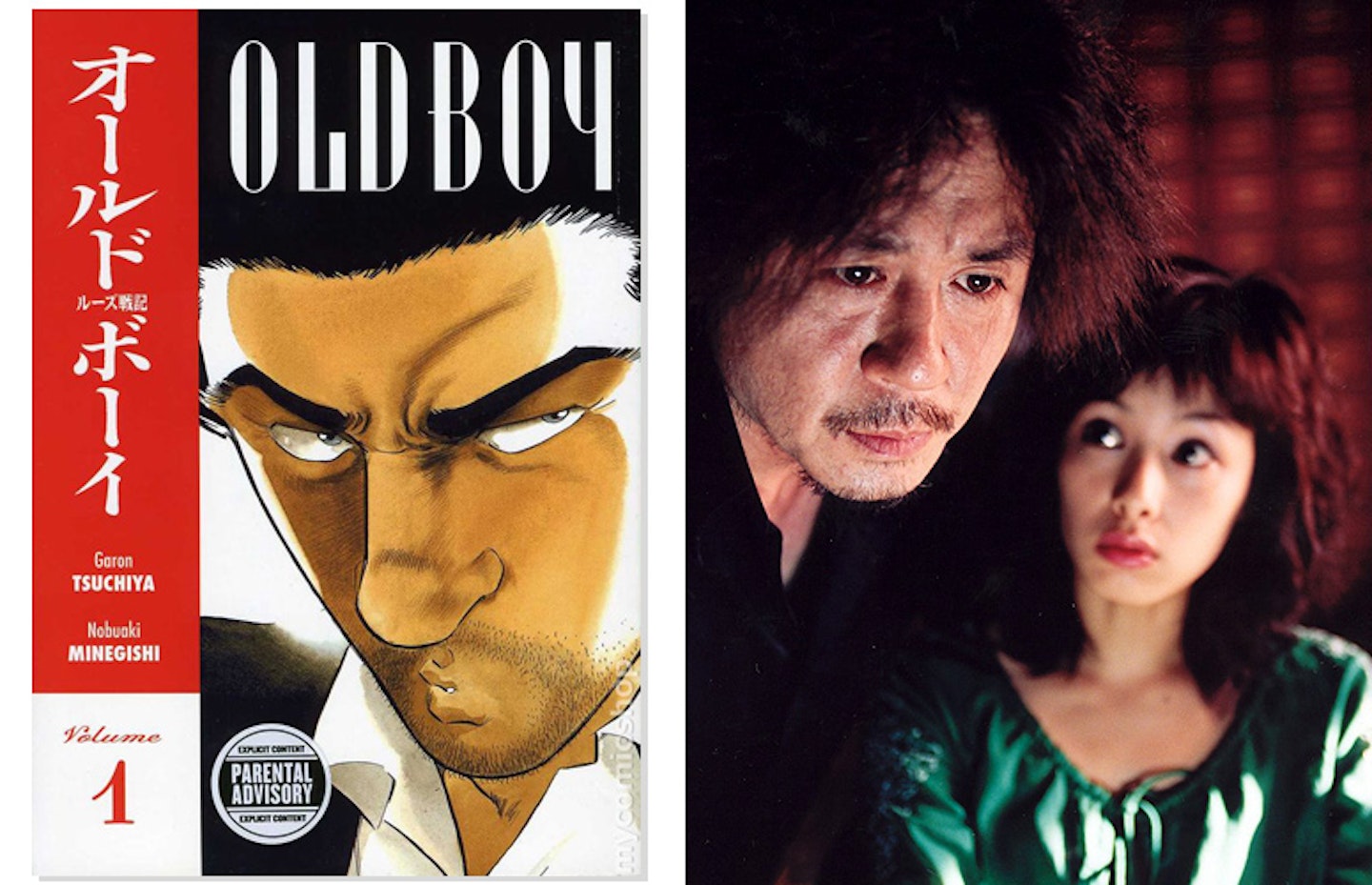
Comic book: Old Boy (1996-1998)
Films: Oldboy (Park Chan-wook, 2003), Oldboy (Spike Lee, 2013)
Garon Tsuchiya and Nobuaki Minegishi’s Japanese manga series has now inspired two separate films. Though the core idea of our hero being inexplicably imprisoned is found in every version, there are important differences. In the manga, the protagonist is locked up for a decade; in the 2003 film it’s 15 years; in Spike Lee’s version it’s 20. Park’s version also creates its own darkest ingredients. In the manga original, no-one dies until the very end, and there’s no famous hammer fight, despite the comic-like framing by Park. Similarly, while incest is integral to the plot of the 2003 adaptation, there are no such untoward shenanigans in the original.
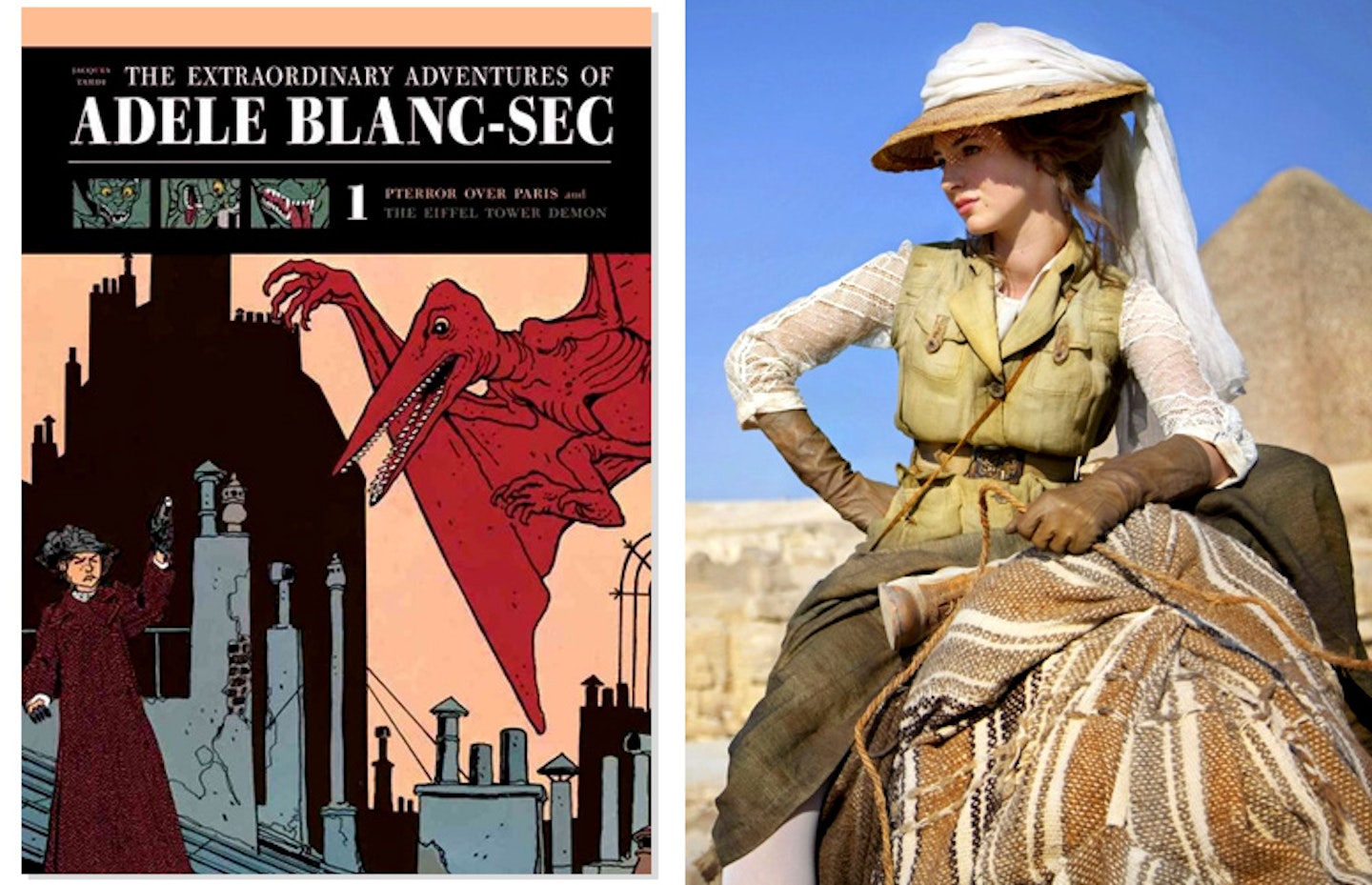
Comic book: The Extraordinary Adventures Of Adèle Blanc-Sec (1976-present)
Film: The Extraordinary Adventures Of Adèle Blanc-Sec (Luc Besson, 2010)
Luc Besson’s films have always had a strong comic-book vibe. In fact, it seems outrageous that Leon and The Fifth Element didn’t come from pulpy, graphic book sources, with the latter even using comic book writers for the production design. Amazingly, it took until 2010 for him to finally adapt a real comic, finding inspiration in Jacques Tardi’s long-running French series of the same name. Besson stays true to the original’s fun tone of historical adventure, resulting in his best-reviewed film since Nikita.
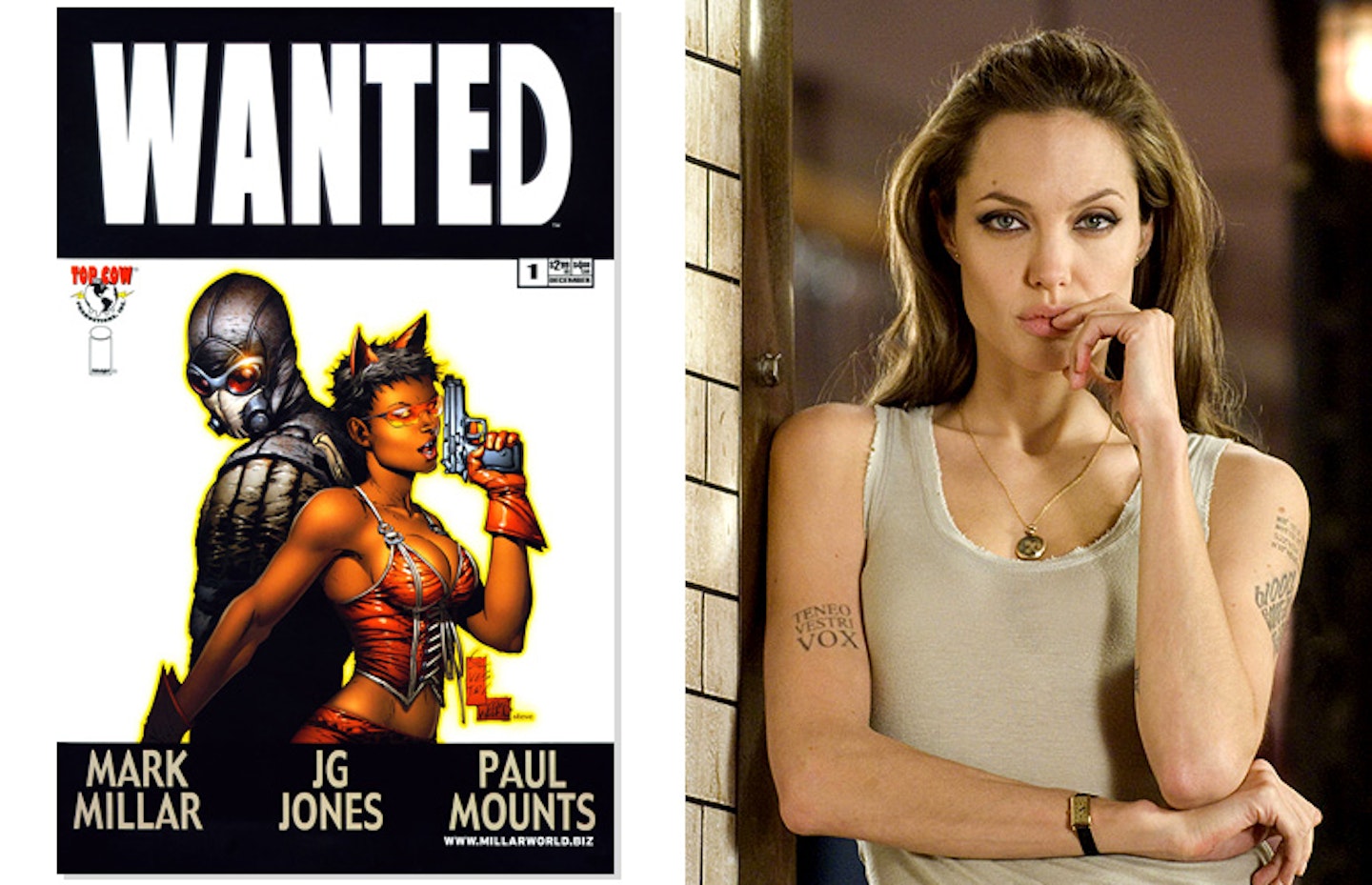
Comic book: Wanted (2003-2005)
Film: Wanted (Timur Bekmambetov, 2008)
While the film adaptation is perhaps best known for Angelina Jolie’s arse, the comic book proved to be Mark Millar’s breakout original series. There are big differences between the two though, including a hell of a lot more violence in Millar’s version. It has characters like Johnny Two-Dicks and Shithead (who ends up being bleached to death), and a cloned superhero with Down’s syndrome. And while the film ends pretty aggressively (with James McAvoy asking the audience, “What the fuck have you done lately?”), Millar’s original blows it out of the water: “This is my face when I’m fucking you in the ass.”
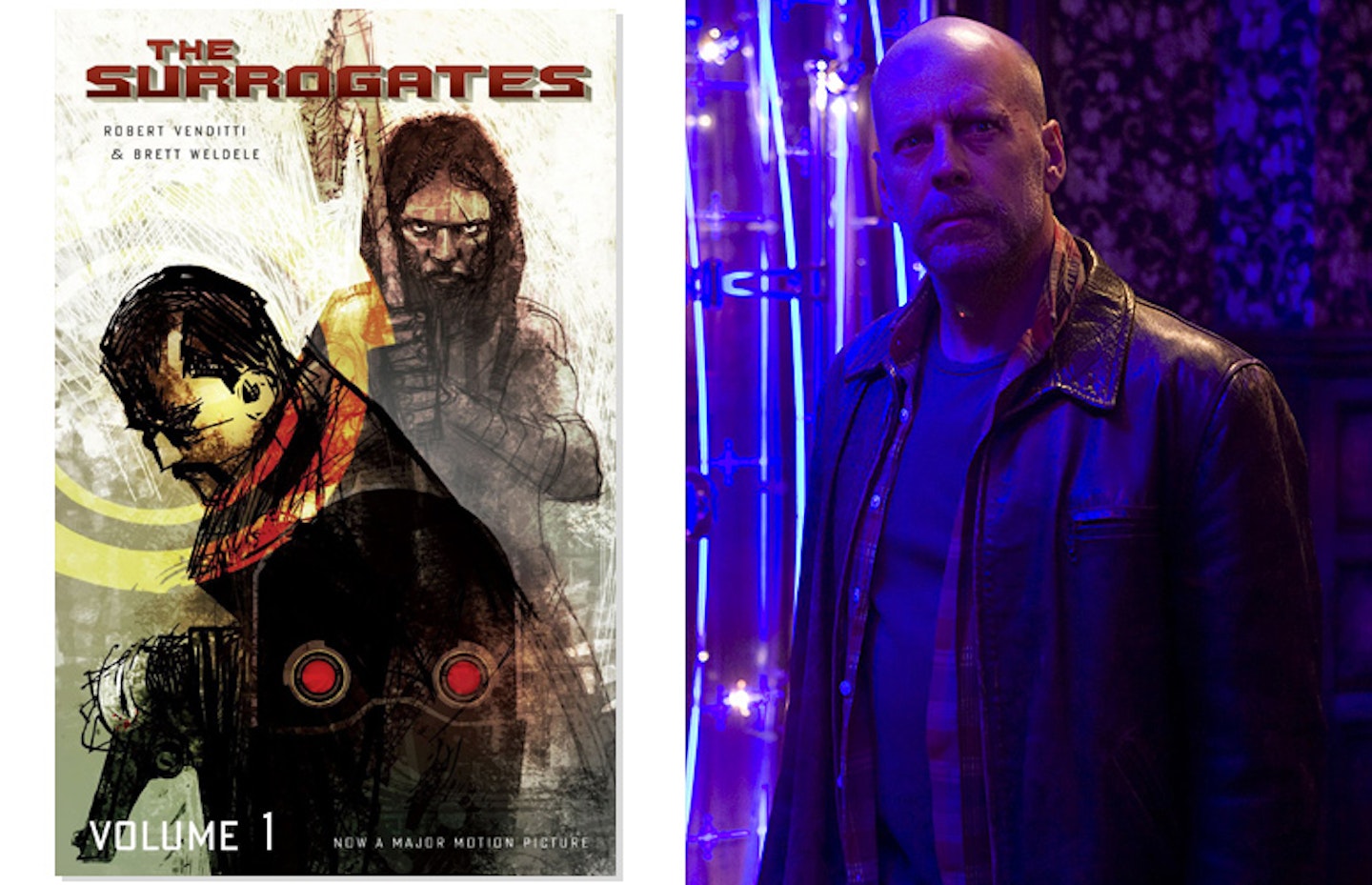
Comic book: The Surrogates (2005-2006)
Film: Surrogates (Jonathan Mostow, 2009)
The film version proved a damp squib, not least because of Bruce Willis’s truly awful toupée, but it’s not for lack of trying. Director Jonathan Mostow is true to the central idea – people mostly live through remotely controlled androids, when a murder disrupts the system – yet adds ingredients missing from the original. In the film, an unknown assailant destroys not only a Surrogate (as in the comic), but also its human operator, thus introducing a much greater sense of danger. It’s still not a great film, but at least it adds to its source.
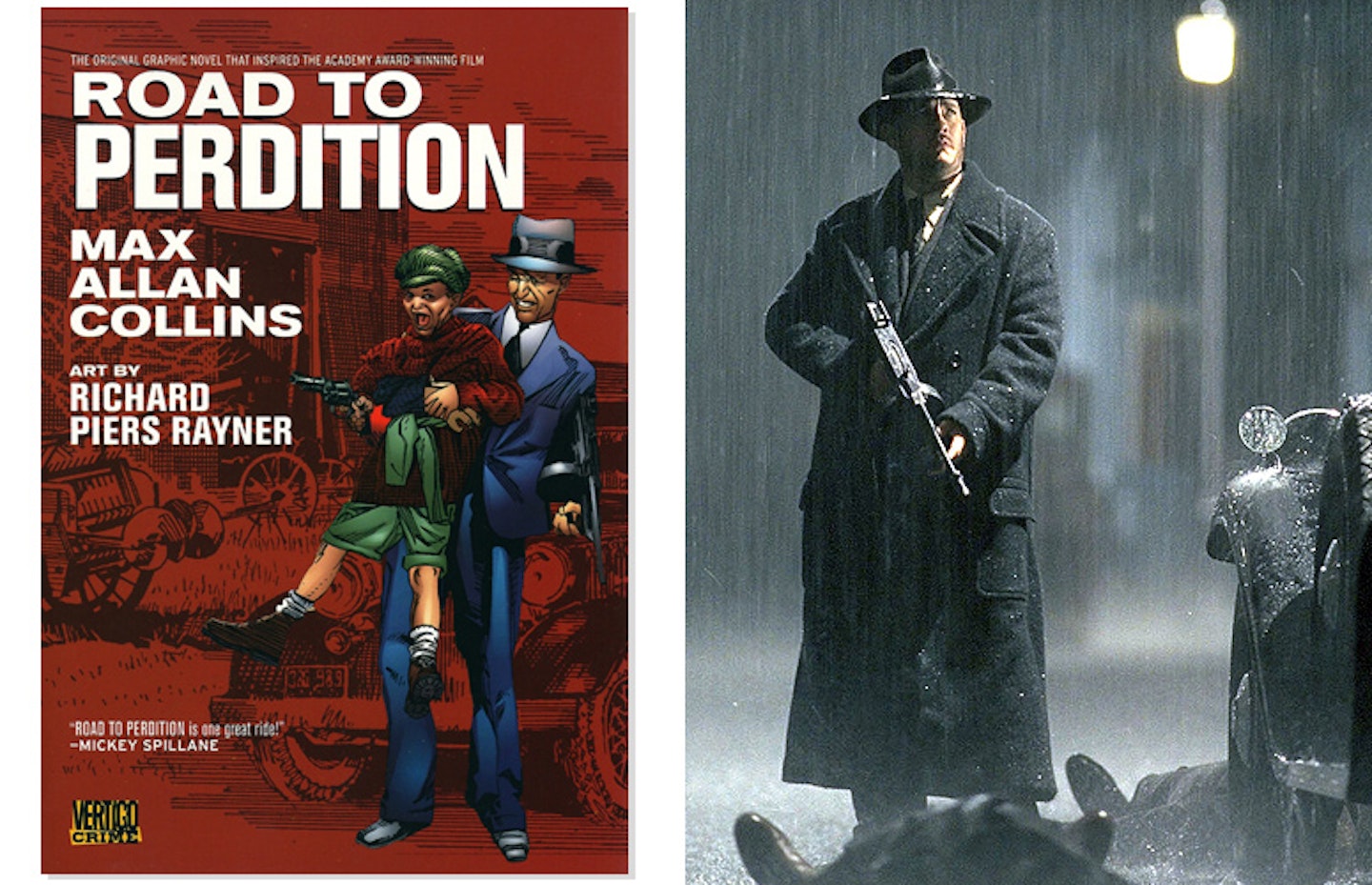
Comic book: Road To Perdition (1998, plus spin-off sequels)
Film: Road To Perdition (Sam Mendes, 2002)
Sam Mendes’ difficult second album was in fact based on not one, but two comic books: Max Allan Collins’ series of the same name, which was in turn based on the 1970 Japanese manga series, Lone Wolf And Cub. However, Allan Collins’ version spans generations, from the Great Depression to a post-Vietnam America, while Mendes stays firmly rooted in 1931. The film may not cry out ‘comic book’, but you can see its roots in the stunning, rain-drenched cinematography, which won cinematographer Conrad Hall a posthumous Oscar.
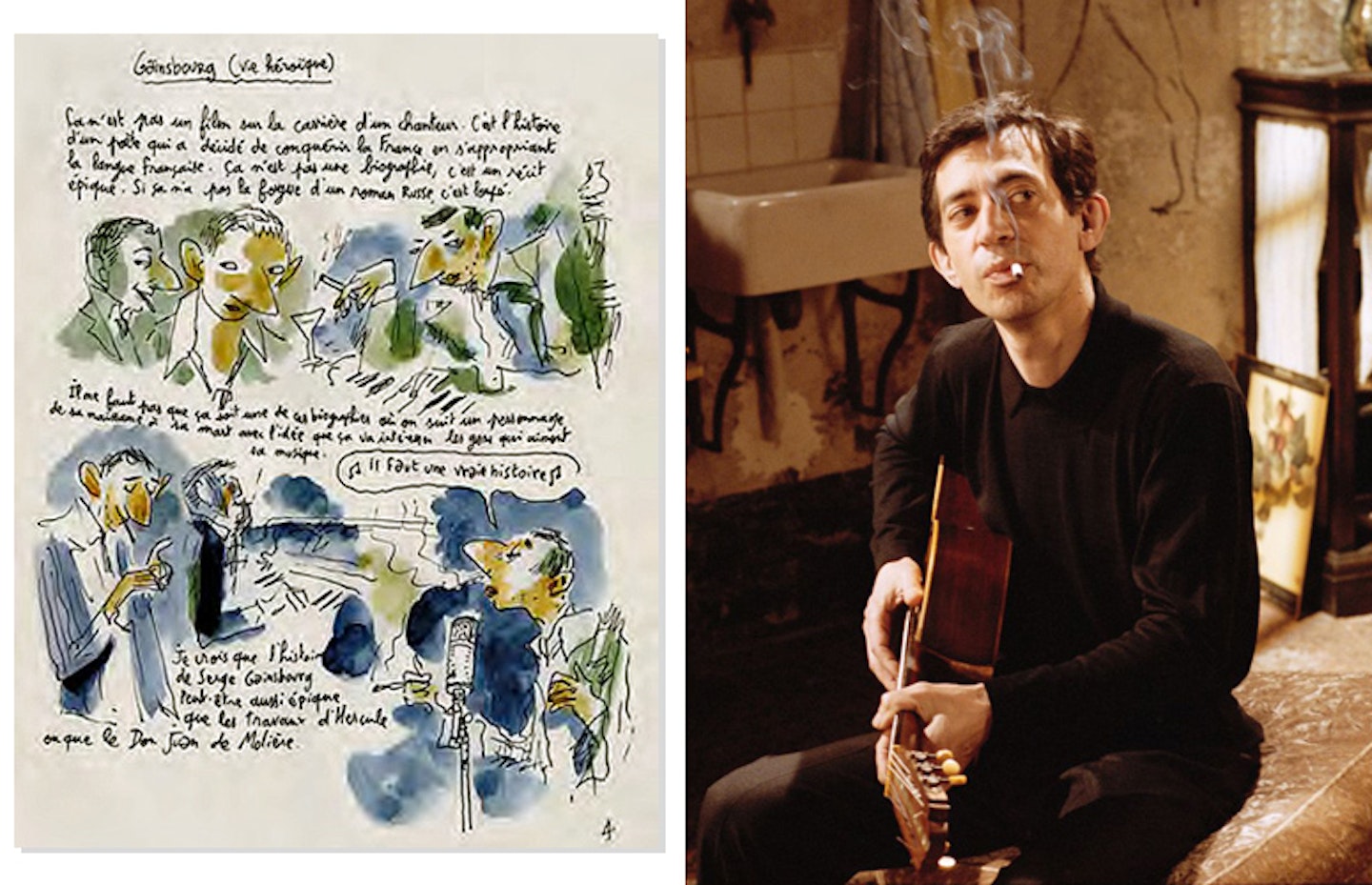
Comic book: Gainsbourg (2010)
Film: Gainsbourg: A Heroic Life (Joann Sfar, 2010)
Writer/director Joann Sfar wouldn’t be happy to see his film included in this list. While the film was written first through drawings and comic book sketches, he insists that this is just because “[his] way of writing goes through drawing.” Nonetheless, as a comic-book artist, his film has clear roots in its graphic origins. Most obviously, an animated Gainsbourg appears throughout the film, tying it firmly to a comic book sensibility. Unfortunately, we were robbed of Charlotte Gainsbourg playing her own father when she dropped out, reportedly finding it too unnerving.
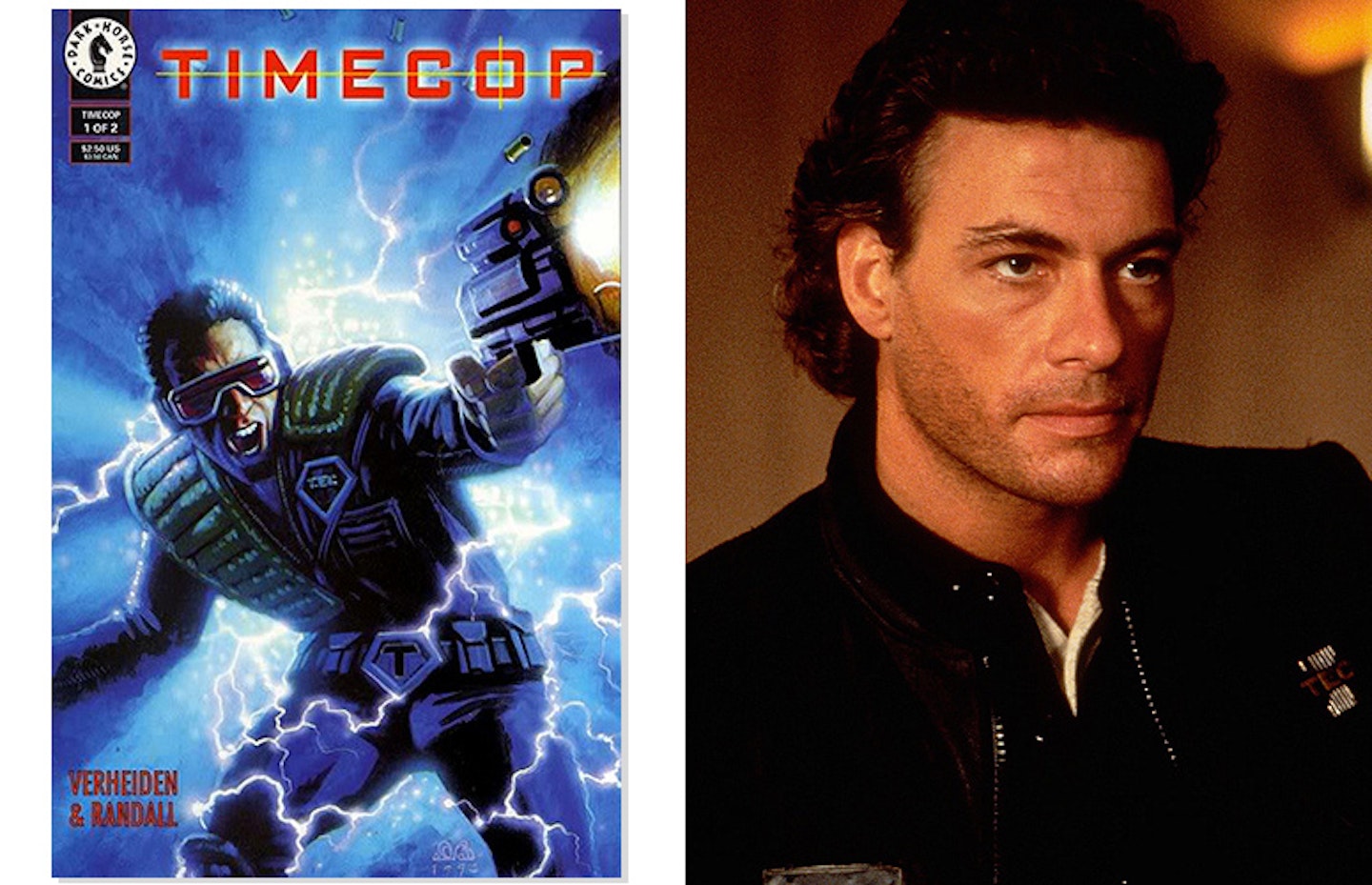
Comic book: Timecop (1992-94)
Film: Timecop (Peter Hyams, 1994)
It only ran for three issues in 1992 yet Mark Verheiden’s comic-book creation spawned a solid Jean-Claude Van Damme film, a 1997 TV series and a video game. In the case of the movie, Verheiden also wrote the script, and as such, it’s a pretty faithful rendering of the time-travelling super cop. In particular, Van Damme demonstrated surprisingly solid acting chops. It wasn’t all good news, though. In 2003, we received Timecop 2: The Berlin Decision, the sequel literally no-one was asking for.
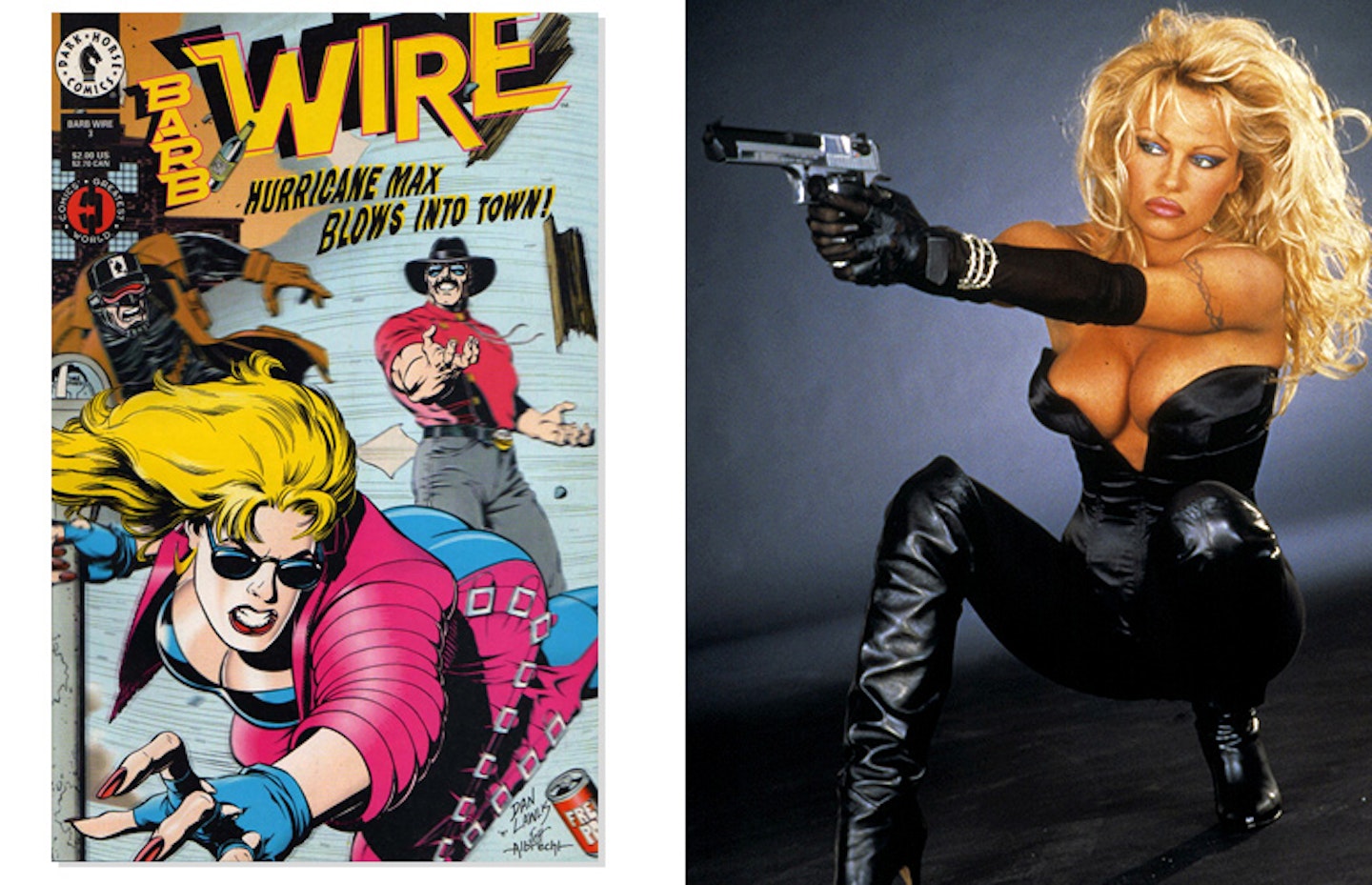
Comic book: Barb Wire (1994-1998)
Film: Barb Wire (David Hogan, 1996)
While Casablanca 2: Play It Again, Again! may never get made, we at least have Pamela Anderson in Barb Wire. The plot of both the comic and the film is very loosely inspired by the 1942 classic, with Anderson replacing Humphrey Bogart as a nightclub owner – this time in 2017, during a second American Civil War. In fairness, she is a far more buxom presence than Bogart, and wears a lot more corsets. Despite this, the film was still nominated for a Razzie, only to lose out to Striptease.
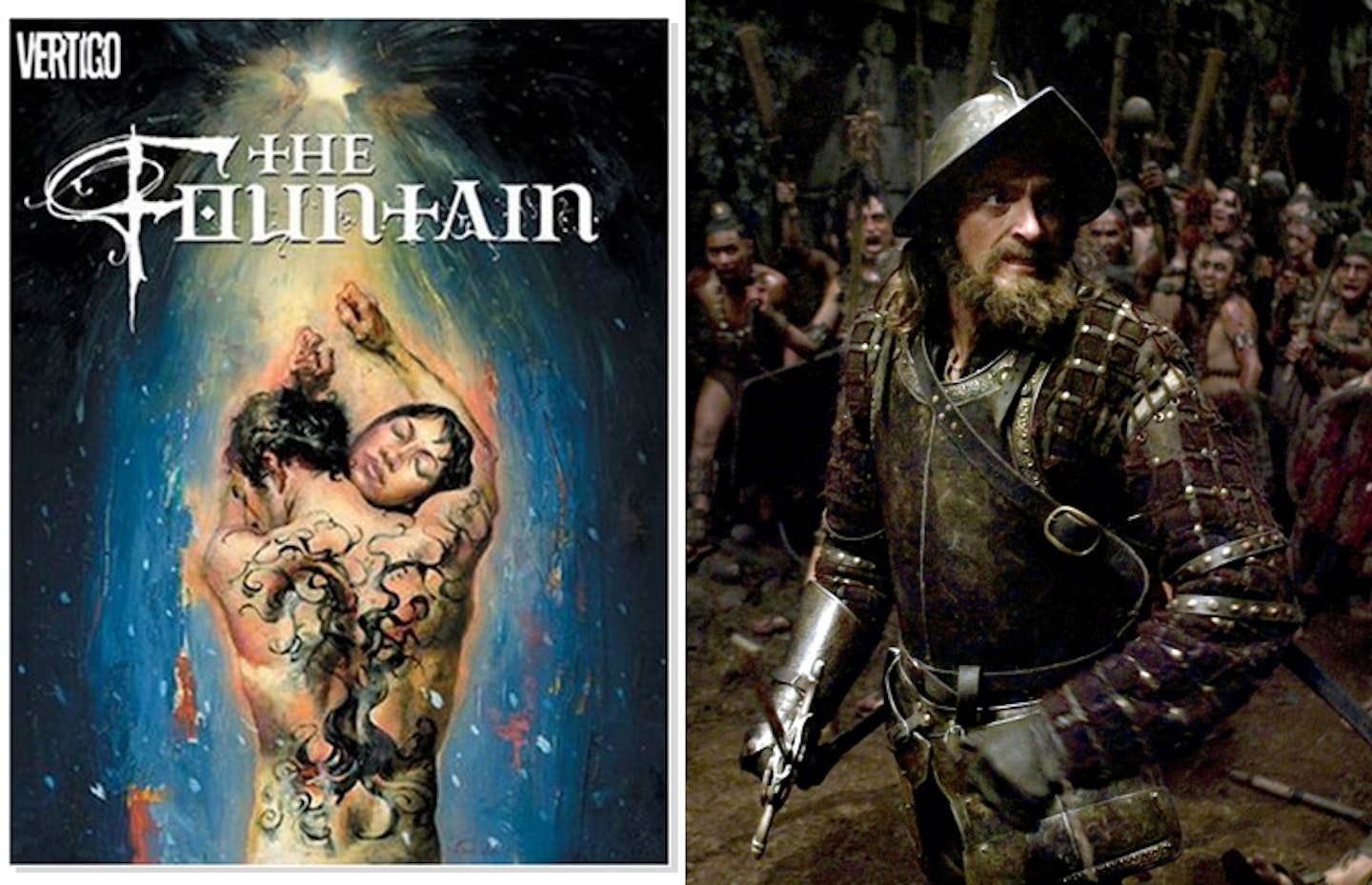
Comic book: The Fountain (2005)
Film: The Fountain (Darren Aronofsky, 2006)
Aronofsky’s frankly bonkers epic very nearly didn’t get made. It was going to star Brad Pitt and Cate Blanchett and cost $70m, but Pitt dropped out and production was shut down. Desperate to tell his story, Aronofsky used his enormously ambitious script as the basis for a comic book. His thinking? “If Hollywood fucks me over at least I’ll make a comic book out of it.” In a reversal of fortune, Warner Bros. then let Aronofsky make his film for half the original cost. Still, it’s worth checking out the comic, illustrated by Kent Williams, for a sign of what the bigger film might have looked like.
***Comic%20book***:%20The%20Addams%20Family%20(1938-1988?auto=format&w=1440&q=80)
Films: The Addams Family (Barry Sonnenfeld, 1991), Addams Family Values (Barry Sonnenfeld, 1993), Addams Family Reunion (Dave Payne, 1998)
Gomez, Morticia, Wednesday, Lurch and the family are now so familiar through the films and TV series that it’s easy to forget they had their roots in another venerable cultural institution, The New Yorker. Charles Addams began the comic in 1938, and it took over half a century before cinema caught up. It was, however, worth the wait. Raul Julia is a hilarious, weirdly sexy Gomez, and, along with Angelica Huston, makes up one of cinema’s most devoted married couples. Still, the film updates and heavily embellishes the original strip, which despite spanning 50 years is remarkably light on detail: the family weren’t even given individual names until the 1964 TV series.

Comic book: From Hell (1989-1996)
Film: From Hell (The Hughes brothers, 2001)
Comic book fans will no doubt be insulted to see this included here, but the film is so far removed from its source that it’s easy to forget it originated with the legendary Alan Moore, of Watchmen fame. In the dark original, Frederick Abberline is a gruff and intimidating protagonist, but in the film he is portrayed by Johnny Depp as what Moore dismissively called an “absinthe-swigging dandy”. Although it loses much of the complexity of the source text, becoming instead a simple mystery, the film is better than you might remember. However, its unfortunate lasting legacy is to have sparked Moore’s ongoing estrangement with Hollywood.

Comic book: Oblivion (2009)
Film: Oblivion (Joseph Kosinski, 2013)
As with Gainsbourg, this is a tricky one. In 2009, Joseph Kosinski partnered with Radical Comics to produce what amounted to a graphic novel/concept art hybrid. For Kosinski, it functioned as a way of pitching his original, cinematic vision to the studio. Its striking visuals may appear to have come from a comic book, but getting Tom Cruise and Olga Kurylenko’s faces onscreen was always the end game. As such, the comic and the film are extremely closely intertwined, with Kosinski masterminding both from the very beginning.

Comic book: A History Of Violence (1997)
Film: A History Of Violence (David Cronenberg, 2005)
This Cronenberg classic is notable for more than just a clean-shaven Viggo Mortensen and a gratuitous scene of 69ing – it is also one of the best comic book adaptations ever made. However, screenwriter Josh Olson altered the original story considerably. While the comic has a lengthy flashback exploring the protagonist’s history with the mob, the film is linear. More drastically, William Hurt’s character is changed from being the hero’s loyal childhood friend, horribly tortured by mobsters, to the hero’s brother, an unrepentant mob boss. They’re both fantastic, though, and complement each other brilliantly.
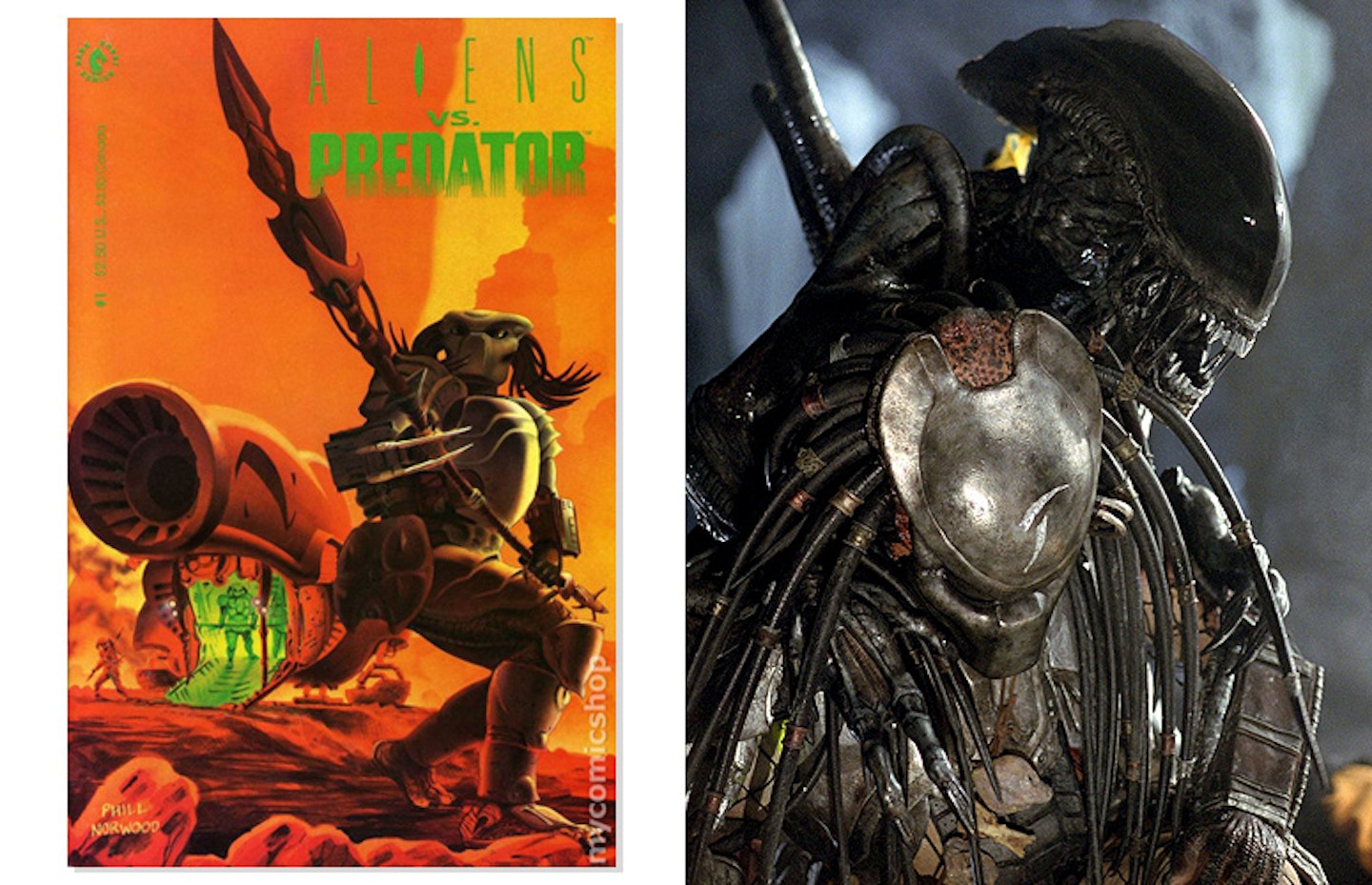
Comic book: Alien Vs. Predator (1989-present)
Films: Alien Vs. Predator (Paul W. S. Anderson, 2004), Alien Vs. Predator: Requiem (Greg and Colin Strause, 2007)
This most celebrated and long-running of genre mash-ups had its origins not in the celebrated SNES game of 1993, but in comic books. However, while the indulgent, fan-pleasing concept flourished on the page (and on the computer screen), it floundered in the cinema. Any of the dignity of the original Alien franchise was lost in Paul W. S. Anderson’s trashy Arctic romp, while “The Brothers Strause” (otherwise known as Greg and Colin) ensured the cinematic franchise was firmly buried in 2007. The games and comics continue apace, but the cinema has since been spared.
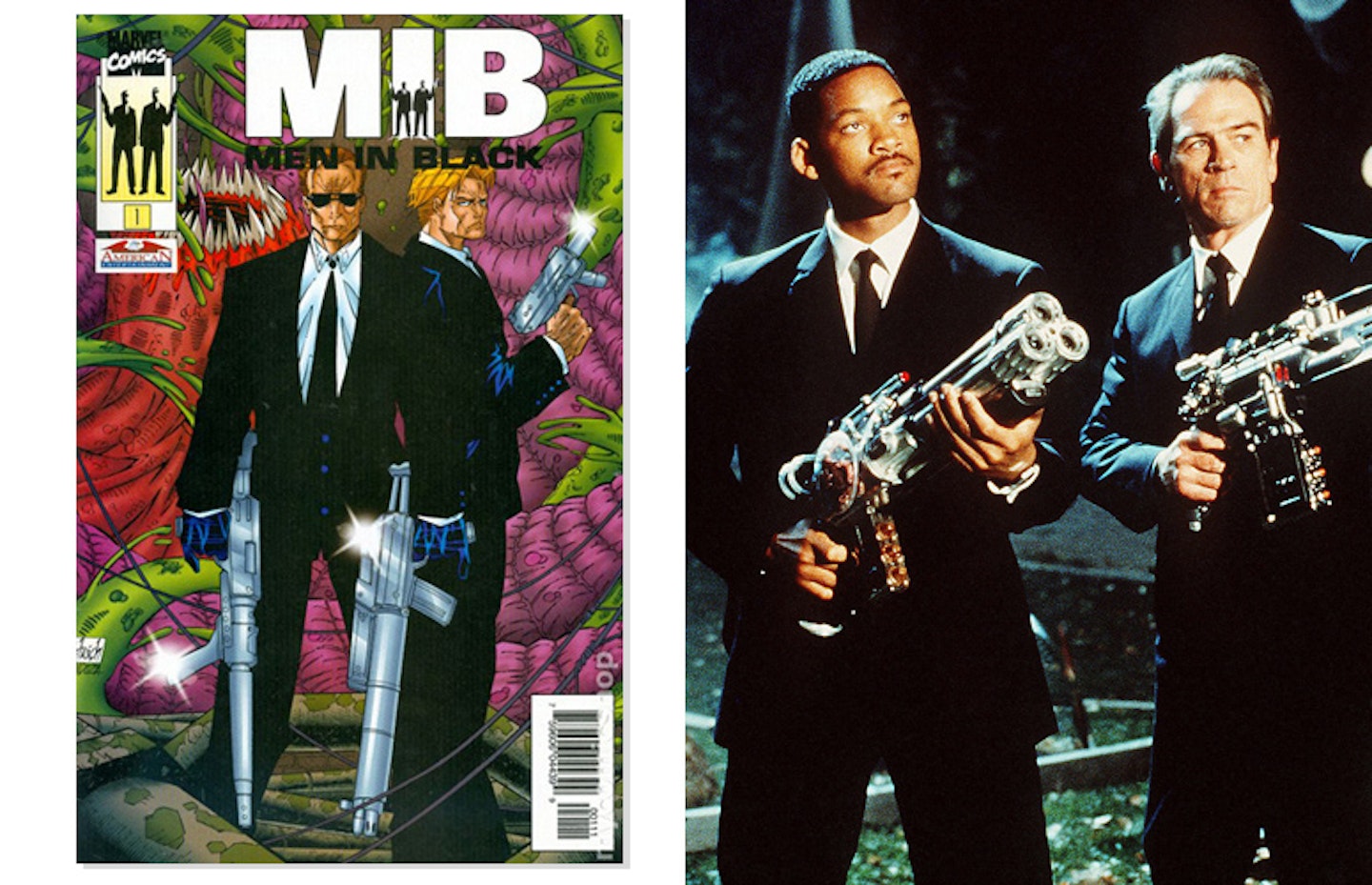
Comic book: The Men In Black (1990-1997)
Films: Men In Black (Barry Sonnenfield, 1997), Men In Black II (Barry Sonnenfeld, 2002), Men In Black 3 (Barry Sonnenfeld, 2012)
Sixteen years on and the Men In Black movie franchise still has legs. Perhaps the main reason is the comedic chemistry between Mr. Jones and Mr. Smith, but the original premise still looks pretty strong: a secret group of men (and women) in sharp suits secretly save the world from the extra-terrestrial with the help of memory-wiping gadgets. Given the films' huge scope and prodigious use of CGI, it’s surprising to learn that the comics were even more ambitious, and much darker. Instead of limiting themselves to aliens, creators Lowell Cunningham and Sandy Carruthers include pretty much anything paranormal, including werewolves, zombies and demons.
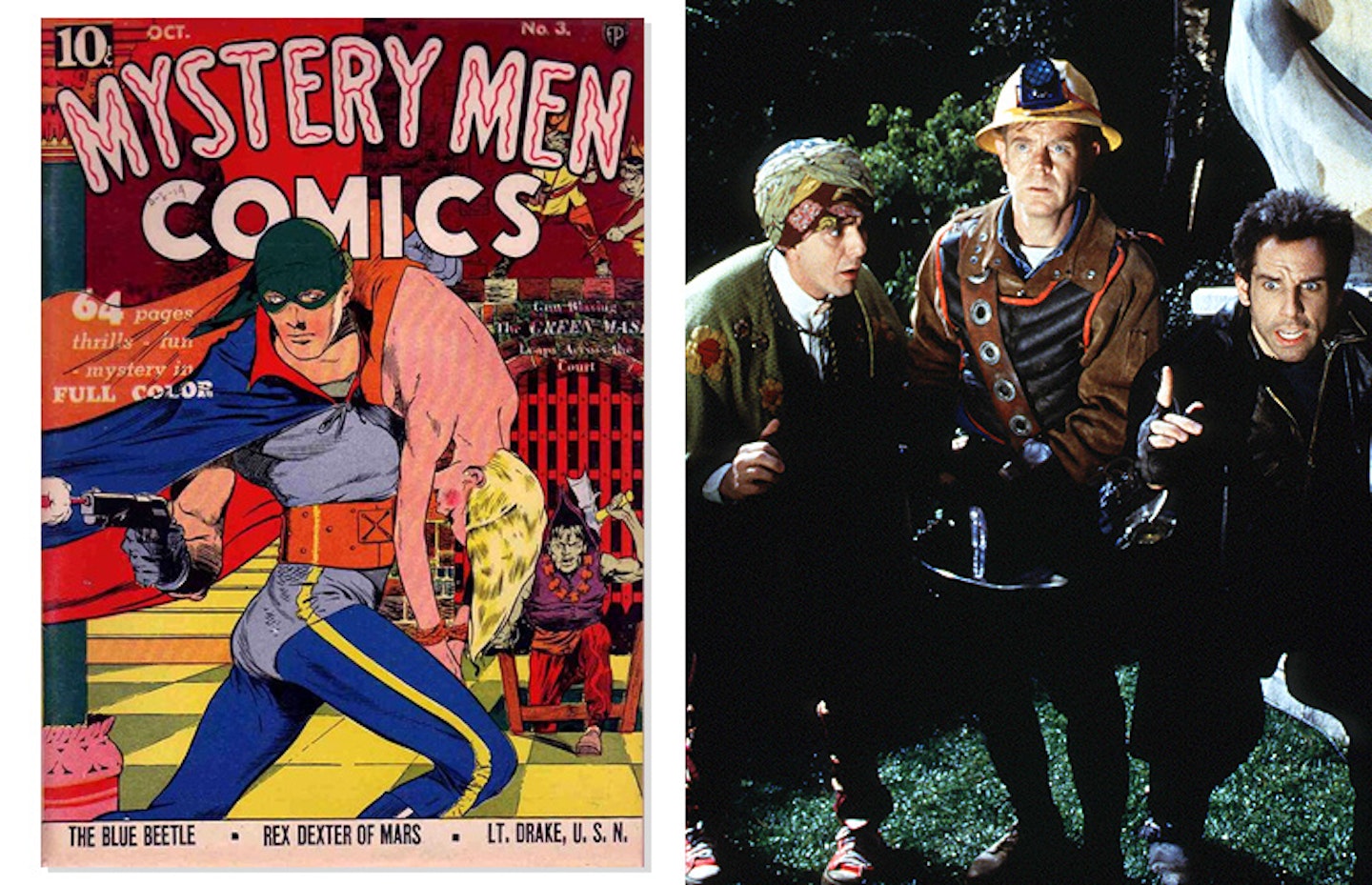
Comic book: Flaming Carrot Comics (1979-2006)
Film: Mystery Men (Kinka Usher, 1999)
This Ben Stiller vehicle was well ahead of its time in parodying superhero tropes and clichés, which is perhaps why it flopped at the box office. But although it seems prescient in its satire today, its roots go back to 1979, and the bizarre Flaming Carrot Comics. Bob Burden’s series generally follows the Flaming Carrot (disguised by a flaming carrot mask), who fights evil wherever he finds it. He is also a part of the Mystery Men, in fact a founding member, but the film jettisons him entirely. Though Usher preserves Burden’s absurdist tone (Flaming Carrot’s powers include self-induced “Zen Stupidity”, so he can face danger unafraid), the link between the source and the film is pretty thin.
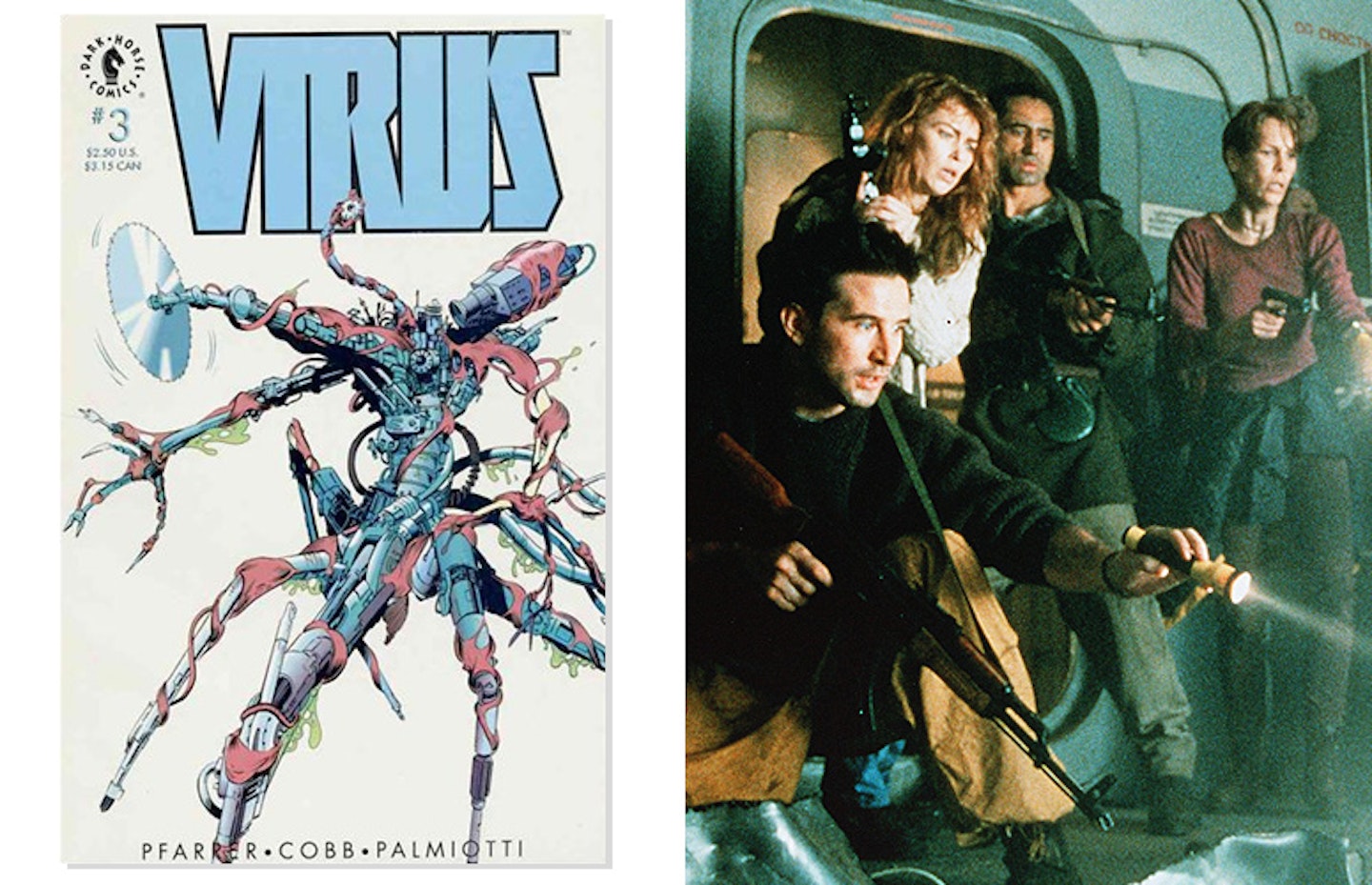
Comic book: Virus (1992-1995)
Film: Virus (John Bruno, 1999)
As with quite a few comics on this list, Chuck Pfarrer’s Virus began life as an idea for a film. Pfarrer wrote the original story as a movie script, but due to special effects limitations, sold the idea to Dark Horse as a comic instead. By 1999, special effects had caught up, and the film was made. Unfortunately, this tale of an American crew battling an alien life form on an abandoned Russian ship was both a critical and commercial flop. Even its star, Jamie Lee Curtis, happily admits how bad it is: “That would be the all time piece of shit... It’s just dreadful.”
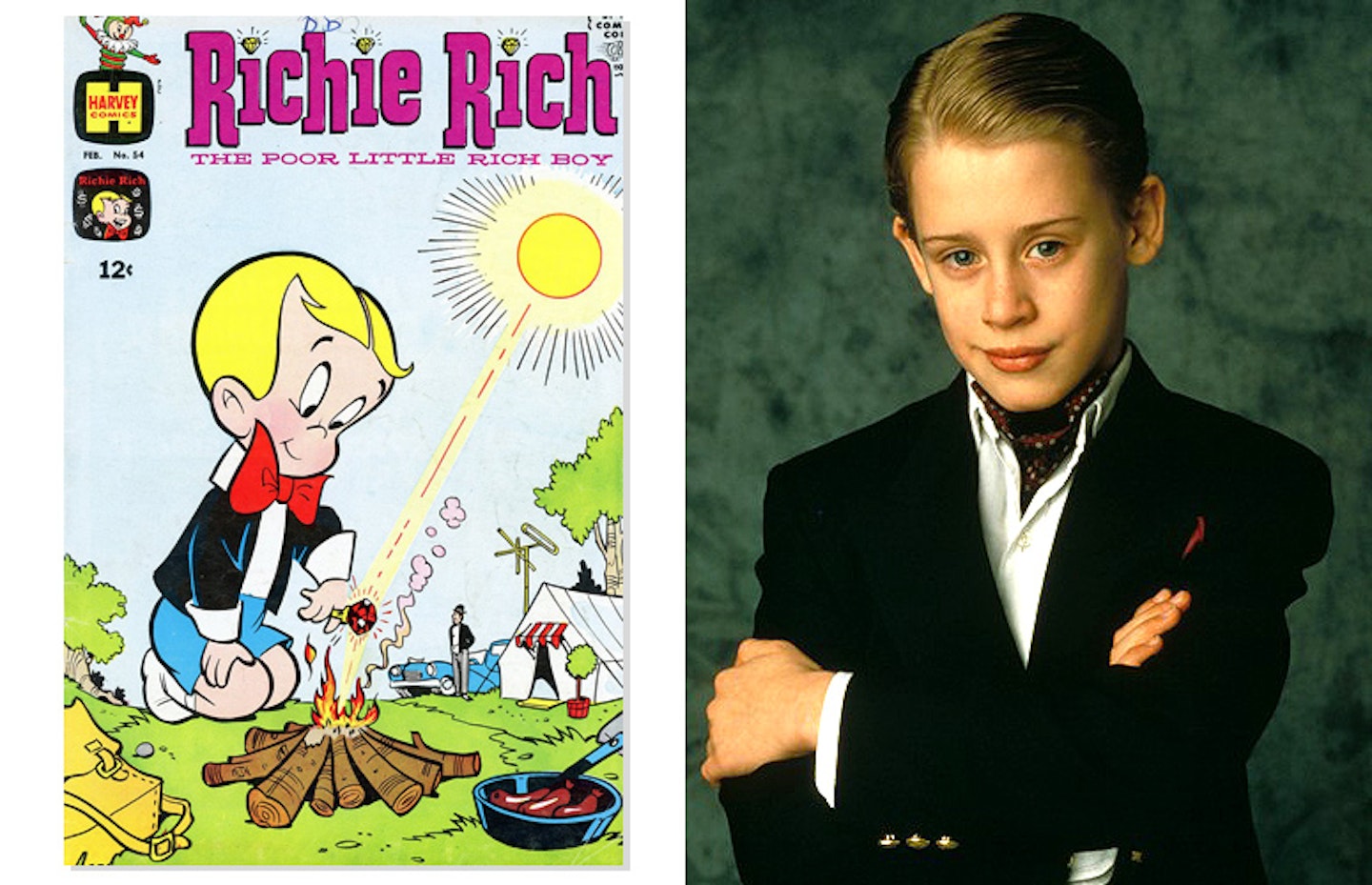
Comic book: Richie Rich (1960-1994)
Films: Richie Rich (Donald Petrie, 1994), Richie Rich’s Christmas Wish (John Murlowski, 1998)
Understandably seen as Home Alone’s lesser cousin, the first film is a fairly enjoyable (if extremely ‘90s) vehicle for Macaulay Culkin. At the time the world’s biggest child star, this was Culkin’s final film as a youngling before going on to... whatever he went on to. He acts out every kid’s fantasy of having unlimited money, with professional baseball lessons from Reggie Jackson, enormous feasts, and a butler, Cadbury, complete with an atrocious English accent. With the comic series ending that same year, the timing wasn’t exactly auspicious, and the film had a disappointing critical and box-office reception, with Culkin was nominated for a Razzie.
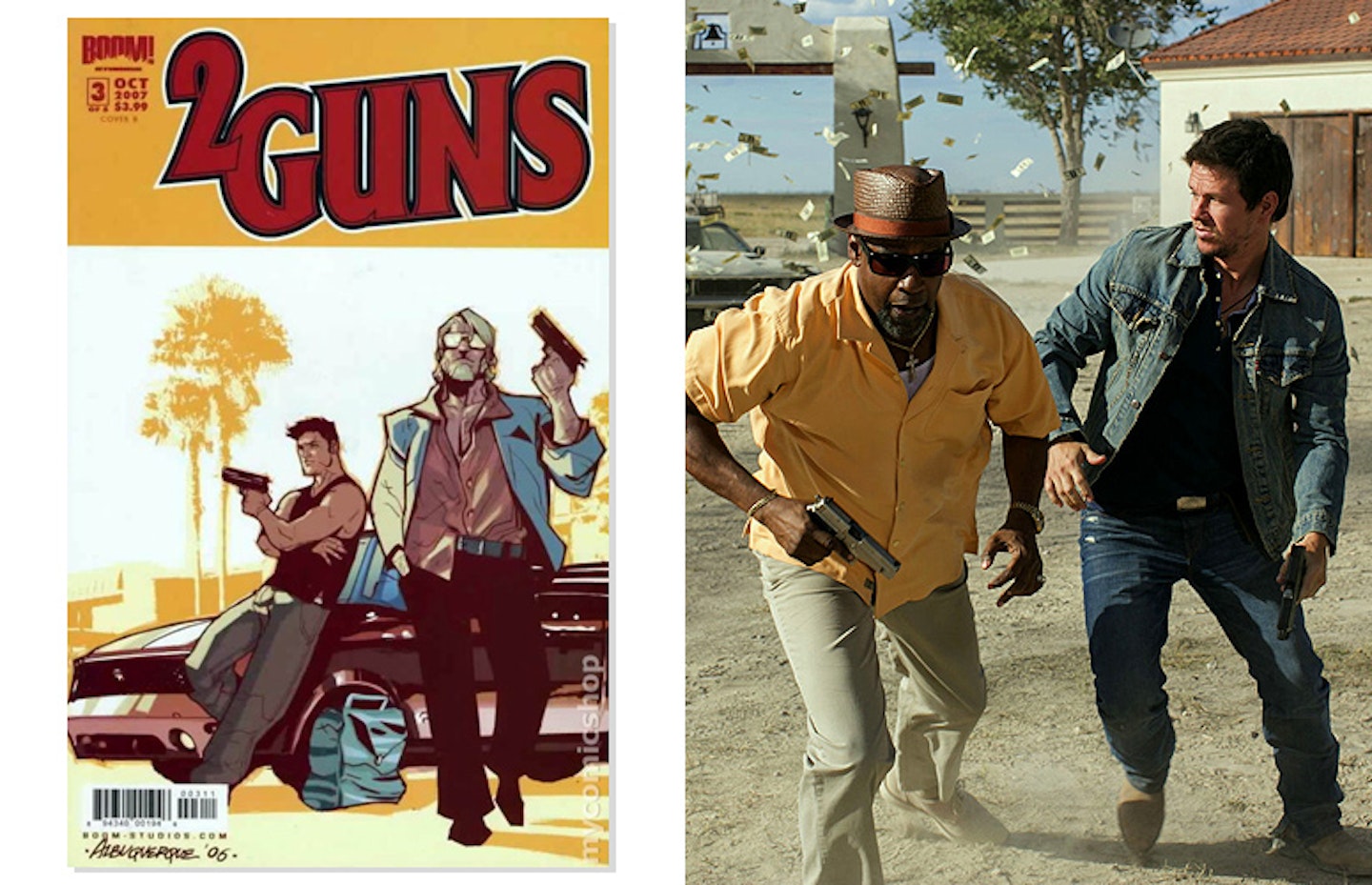
Comic book: 2 Guns (2007)
Film: 2 Guns (Baltasar Kormákur, 2013)
The original comic miniseries follows two undercover agents from different agencies, trying to bring down a drug cartel together. To this extent, the film resembles its source, but it’s different in almost all other ways. Most obvious is the violence and language: the original comic has a fair amount of action and little bit of swearing, while the film goes buckwild with both. Though Denzel Washington and Mark Wahlberg crack wise occasionally, the film loses most of the wry humour of the comic. Gone is a slight, charming caper, and in its place is a much louder, heavier and slower beast.
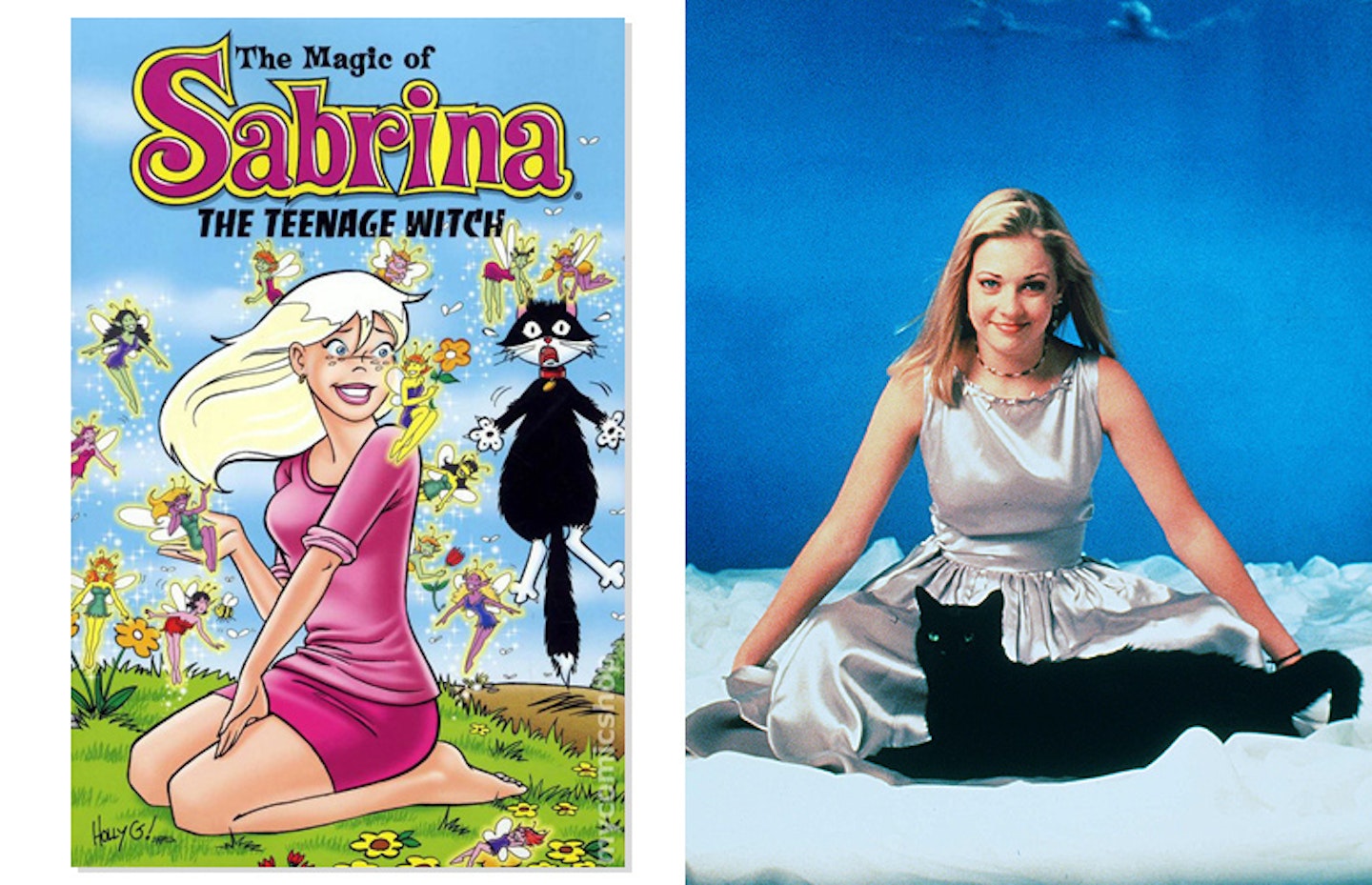
Comic book: Sabrina The Teenage Witch (1962-present)
Film: Sabrina The Teenage Witch (1996)
The TV show beloved by ‘90s kids everywhere was preceded by a feature film (in fine Buffy tradition), but its roots lie in the much older comic. Sabrina first appeared in Archie Comics in 1962, and has had a long list of incarnations since then, including a manga version in 2004. Her original skimpily-clad appearance was appropriately toned down for the film, where Melissa Joan Hart plays a more demure Sabrina. Wisecracking Salem, the family cat, was intact however, and carried over to the successful TV series. The characters are currently on hiatus in comic form but prepare yourselves: there have been rumours of plans for another live-action film, effectively rebooting the franchise.
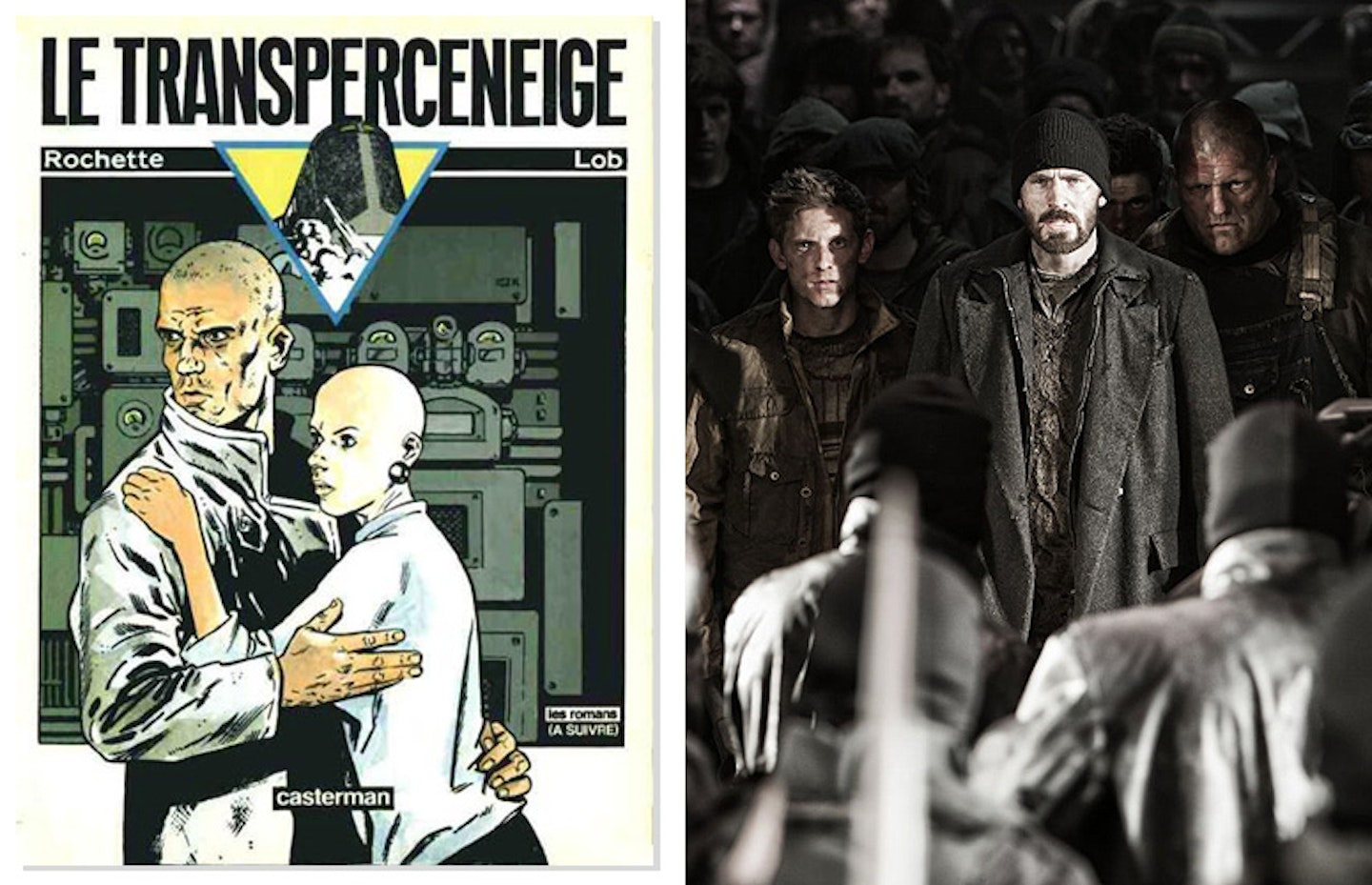
Comic book: Le Transperceneige (1982-2000)
Film: Snowpiercer (Bong Joon-Ho, 2013)
Earth has been plunged into an ice age, with the only survivors living on the ‘Snowpiercer’, a huge train powered by a perpetual motion machine. It’s an intriguing premise, and marks Korean director Bong’s English language debut (he was previously best known to international audiences for The Host). The key element that both the comic and the film share is a focus on social stratification, and English-speaking readers will get a chance to compare for themselves when a translation of the book is released this year. But while the comic has had a long and successful run, the film’s production has been rather more troubled. It has a fantastic cast, including John Hurt, Tilda Swinton, Chris Evans and Ed Harris, but the director spent some time battling with Harvey Weinstein over the edit. It still hasn’t been given a UK release, but it looks like things may be resolved soon.
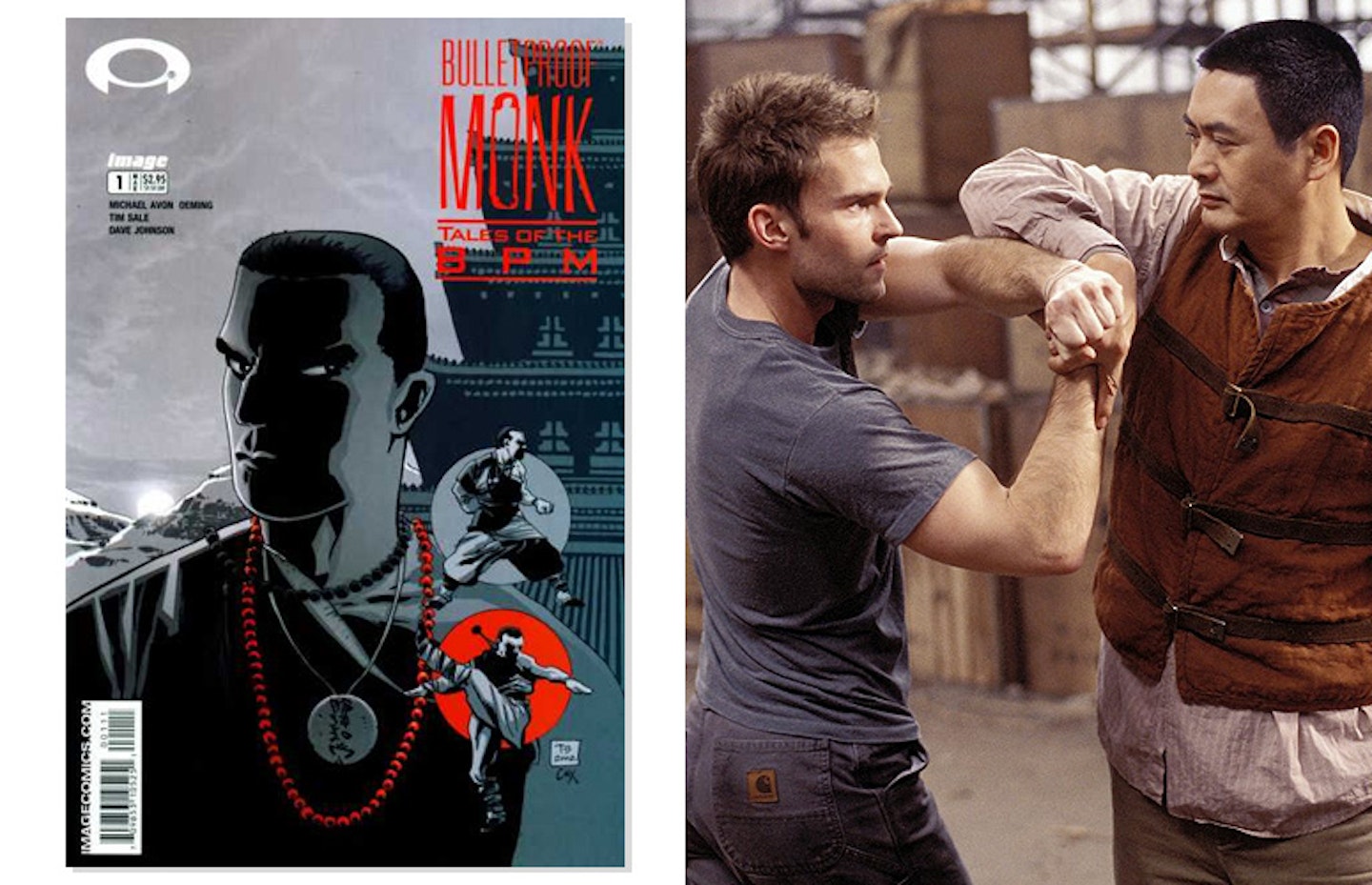
Comic book: Bulletproof Monk (1999)
Film: Bulletproof Monk (Paul Hunter, 2003)
Featuring a post-American Pie Seann William Scott as Chow Yun-Fat’s martial arts pupil, this was a fumbled attempt to follow the successes of The Matrix and Crouching Tiger, Hidden Dragon. It was a critical and commercial failure, despite Chow’s physical prowess and some impressive fight scenes. Perhaps unwisely, the film introduced a lot of comedy that was largely missing from the original comic, and audiences stayed away. Still, at least we didn’t have to see Stifler make out with Chow Yun-Fat.
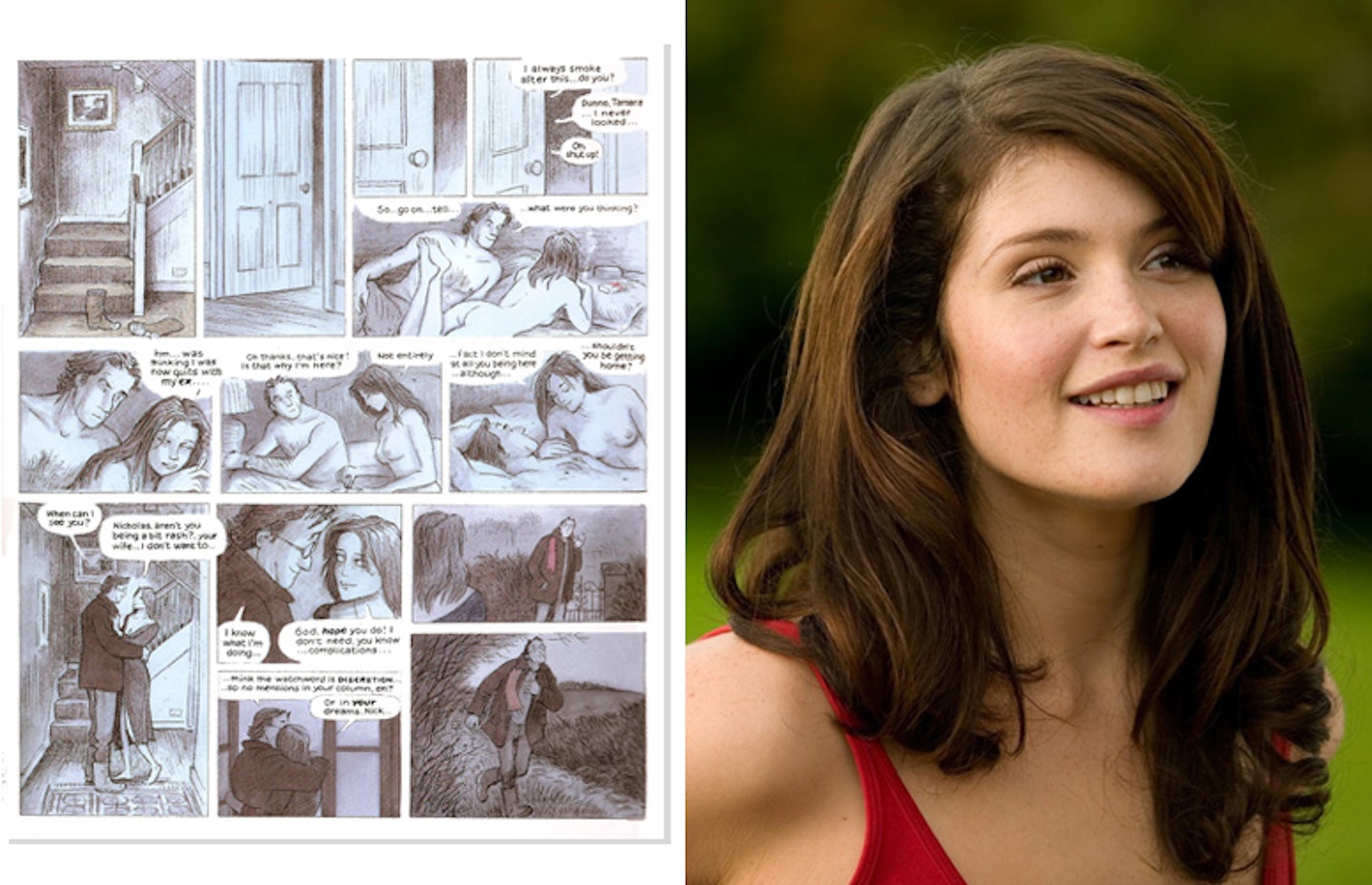
Comic book: Tamara Drewe (2005-2007)
Film: Tamara Drewe (Stephen Frears, 2010)
The origins of Tamara stretch back not only to the Guardian strip of the mid-noughties, but all the way back to Thomas Hardy’s Far From The Madding Crowd. However, it’s a loose inspiration, and both the comic and the film inject a lot more bawdiness and bonking than Hardy would’ve permitted. The film is a relative rarity on this list: it’s British, it’s very faithful, and it’s very funny. Author Posy Simmonds was extremely happy with the film version, and so were audiences.
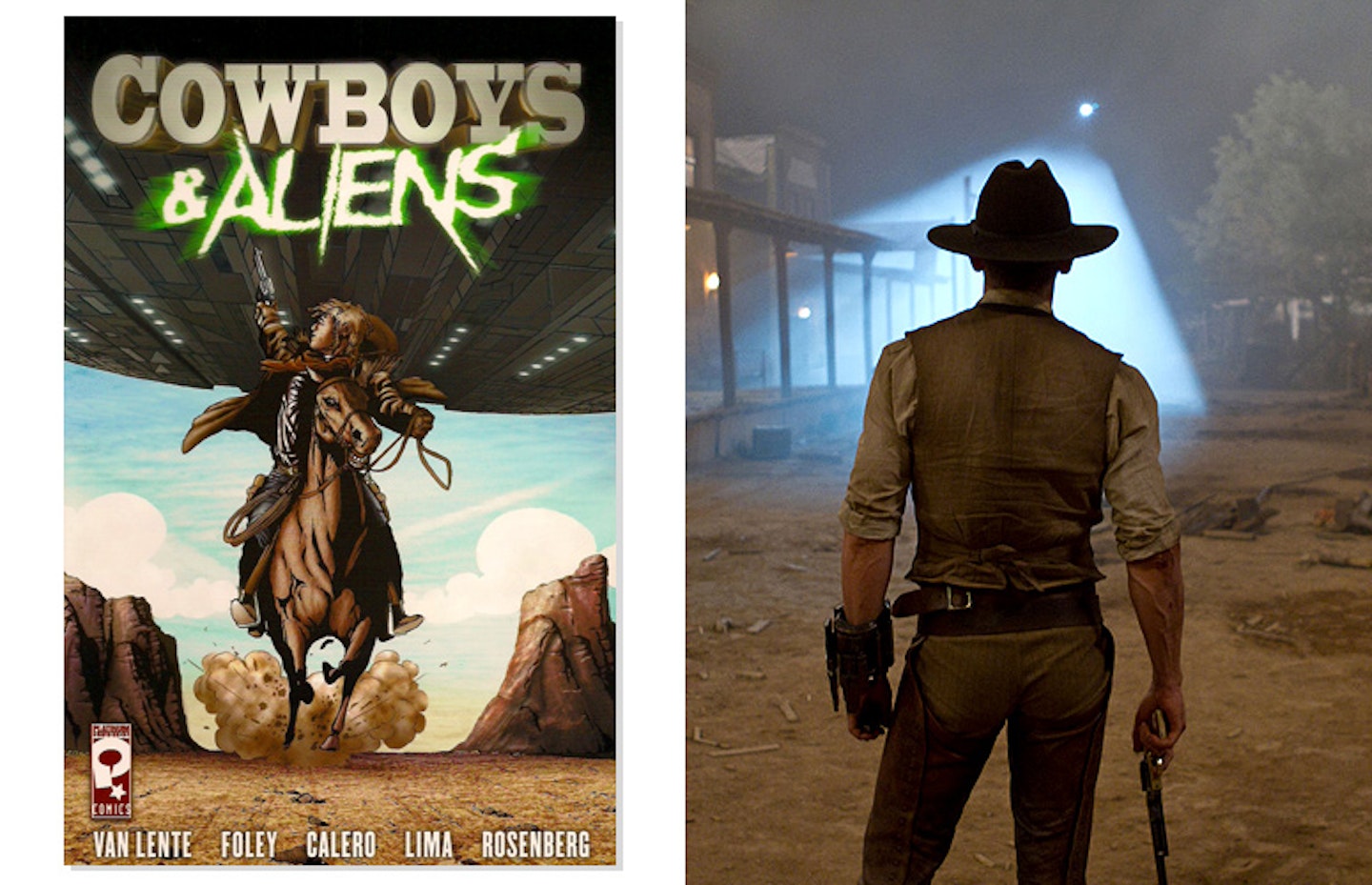
Comic book: Cowboys & Aliens (2006)
Film: Cowboys & Aliens (Jon Favreau, 2011)
A great title, a not-so-great film. Despite the promise of James Bond and Indiana Jones versus aliens in the wild West, any fun that could’ve been had was sucked out by a solemn script and frequently wooden acting. Across its two hour running time, the film does fill in a lot of the gaps from the comic, particularly at the start. Moreover, the scriptwriters (all five of them) freely embellish their source, creating a whole roster of new characters. As such, it’s not a tirelessly slavish adaptation, but not a very successful one either.
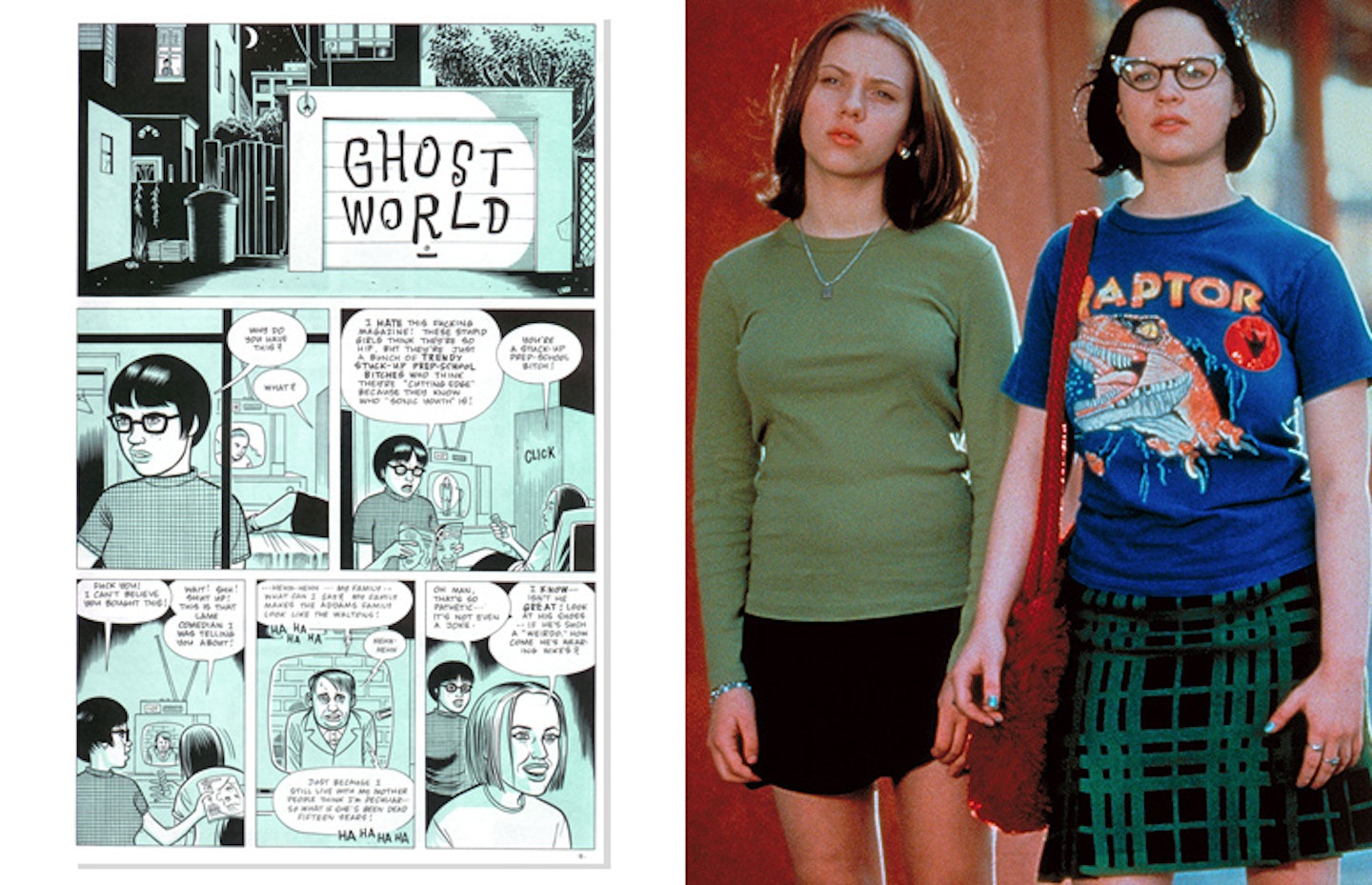
Comic book: Ghost World (1993-1997)
Film: Ghost World (2001)
While the film is a tender, witty and affecting portrayal of adolescent friendship, it’s often forgotten that its source is a similarly excellent comic. Created by Daniel Clowes, the series was stark and dark in its writing, with a spare but striking visual style, and the film was celebrated for successfully translating those elements to the big screen. It’s not a devout adaptation – morphing two characters into one to make Steve Buscemi’s Seymour, for instance – but it's all the more effective for it. It also has the distinction of showcasing Scarlett Johansson in possibly her last teenage role.
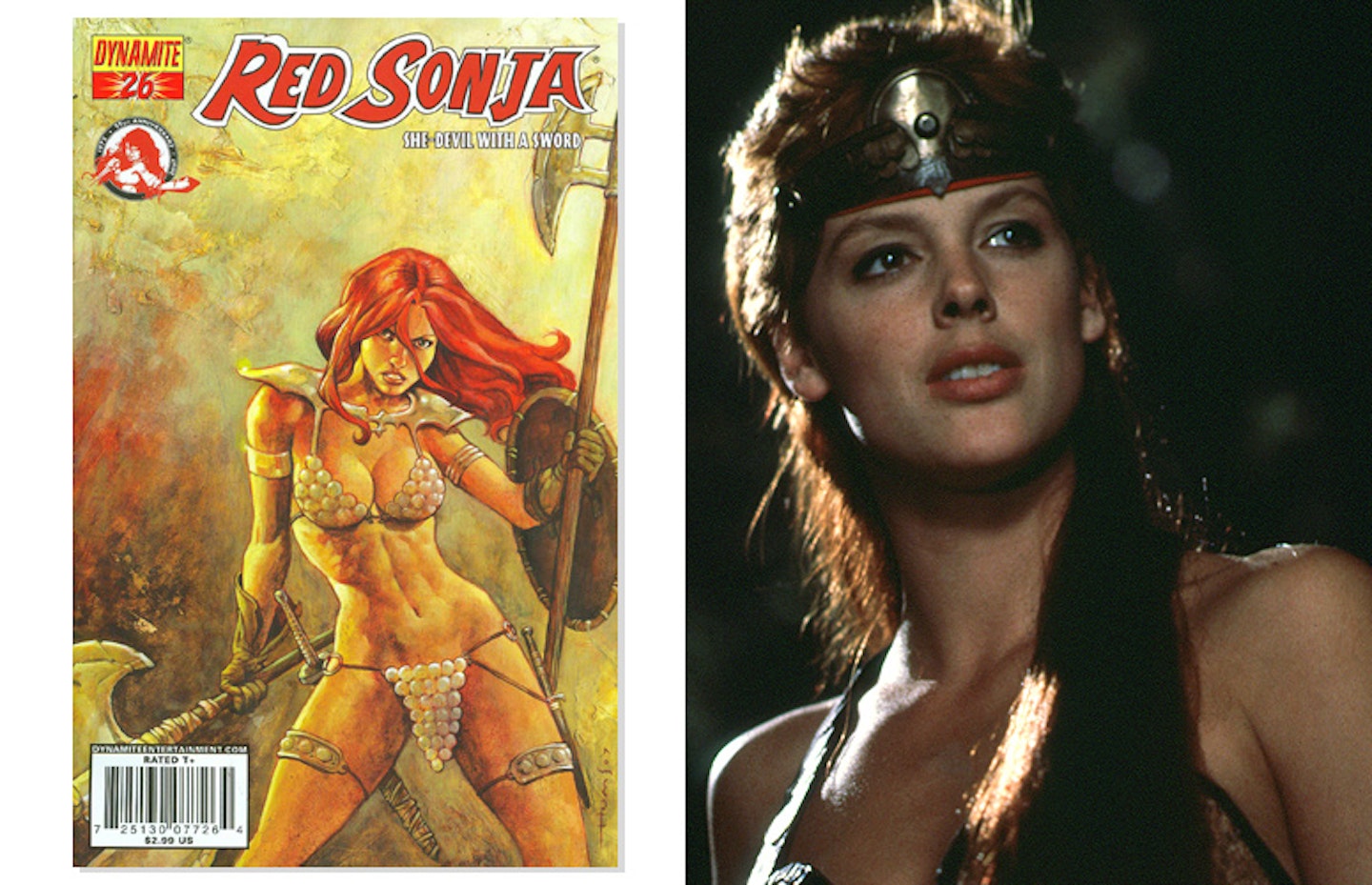
Comic book: Red Sonja: The She-Devil With A Sword (1973-present)
Film: Red Sonja (Richard Fleischer, 1985)
Originally appearing as a character in Conan The Barbarian, Red Sonja has proved a remarkably enduring heroine in comic book form. However, the same success didn’t translate to the silver screen. Brigitte Nielsen played the eponymous scarlet heroine, and was accompanied by Arnold Schwarzenegger as the Conan-esque Lord Kalidor, but the film couldn’t live up to its cast. It’s riddled with cliché, barely disguised homophobia, and terrible acting. Schwarzenegger’s called it “the worst film I have ever made.”
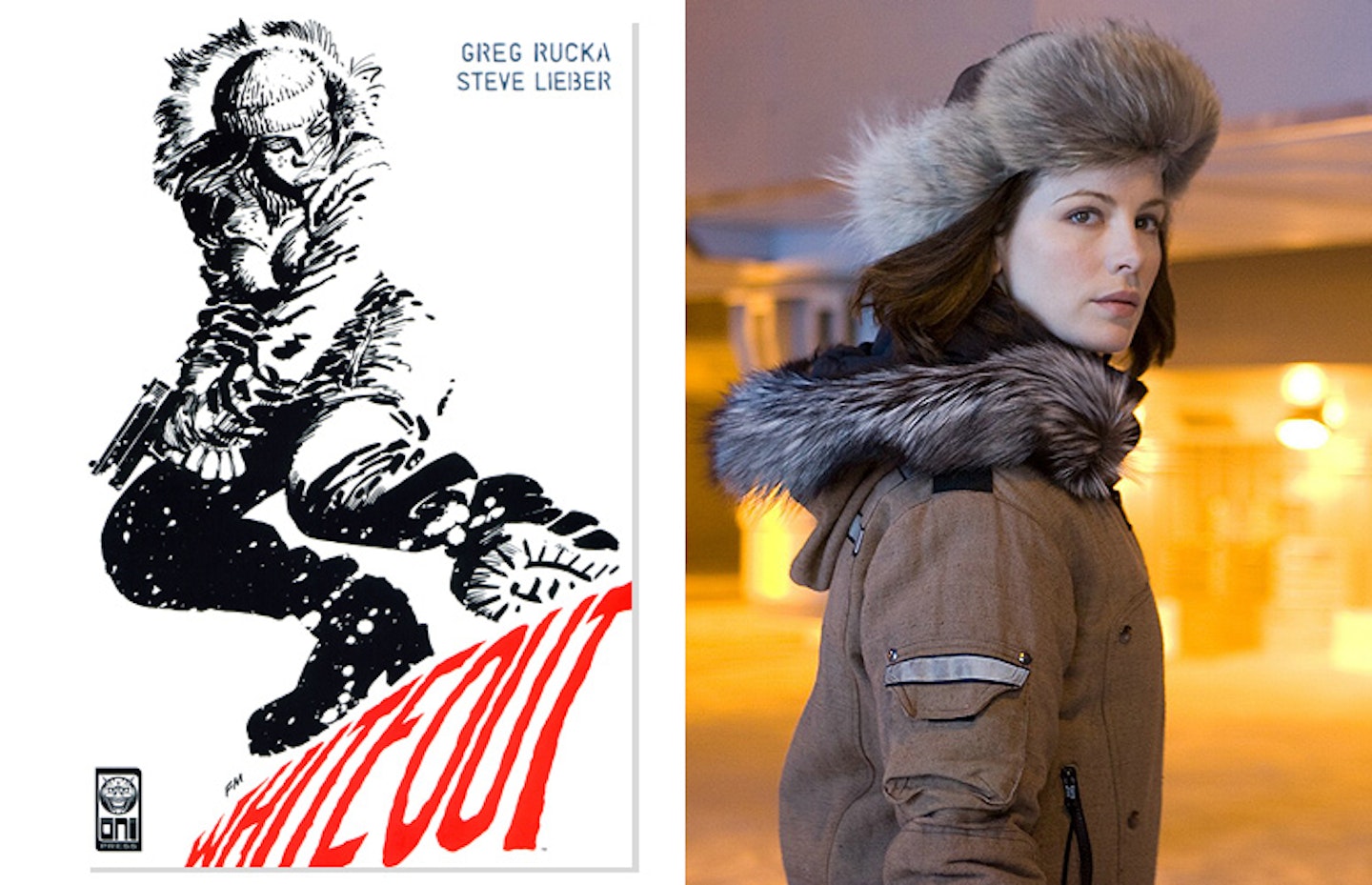
Comic book: Whiteout (1998)
Film: Whiteout (Dominic Sena, 2009)
Steve Lieber and Greg Rucka’s original four-issue run made inspired use of white space on the page, and was successful enough to spawn various sequels. By contrast, the Kate Beckinsale film was a messy affair, bereft of style or suspense. While Rucka was happy with the adaptation, nobody else seemed to be. It took two additional directors in the shapes of Stuart Baird and Len Wiseman to help Sena’s vision limp onto the screen, by which point the fierce originality and grit of the source had been diluted completely.
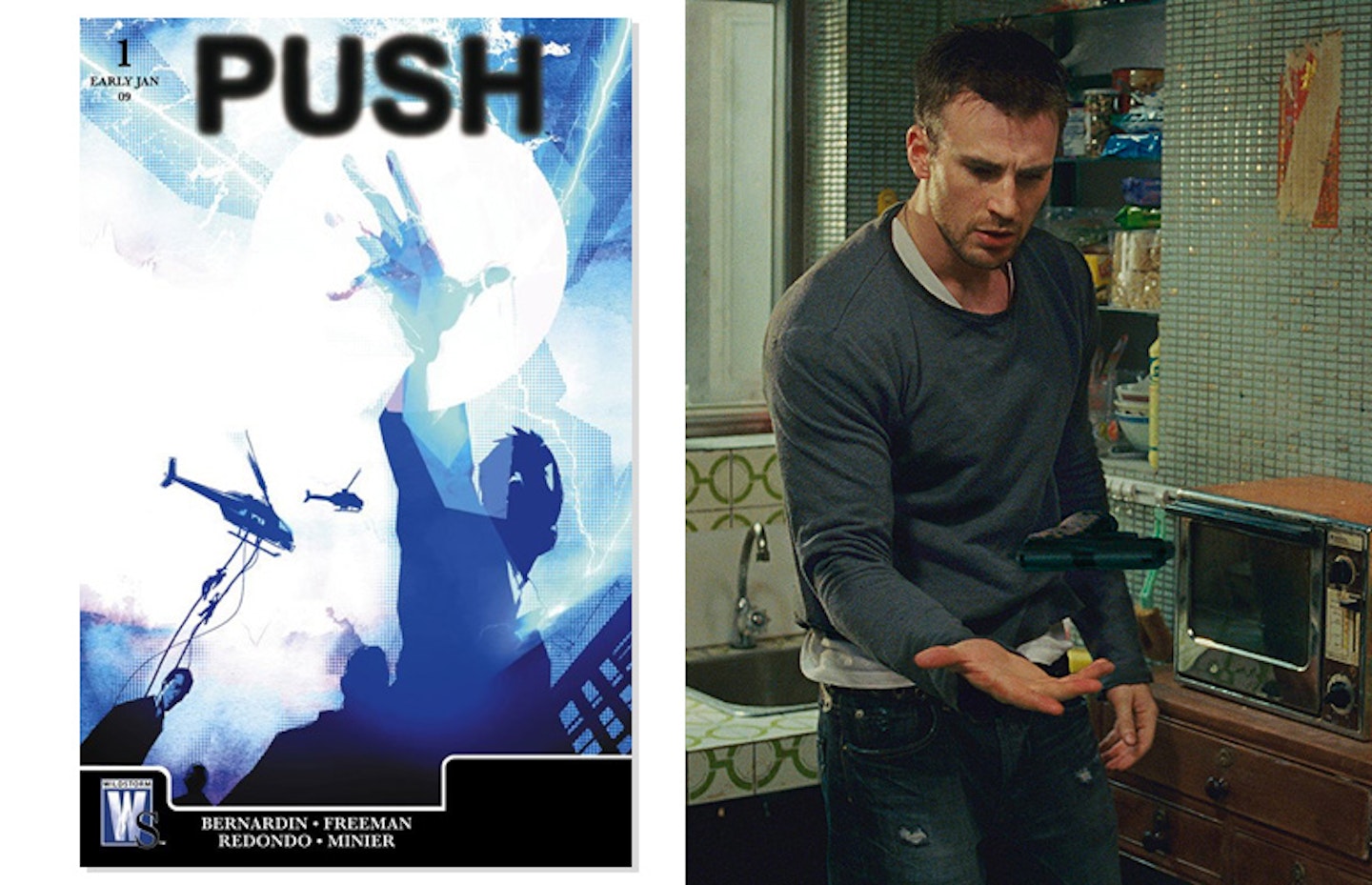
Comic book: Push (2008-9)
Film: Push (2009)
Although it offered a strong cast, Push sank quietly into obscurity when it was released, failing to threaten X-Men’s mutant crown. But before the film was released, those behind it were sufficiently hopeful for it that in 2008 a graphic mini-series was released, acting as a prequel to the upcoming film. The film and the comic certainly complemented each other – perhaps unsurprising given that they were written together – and in fact cleared up some of the more confusing elements of the set-up for less attentive viewers. But neither was particularly inspired, or inspiring, that sequel-baiting ending remained unfulfilled and the X-Men continued to reign supreme.
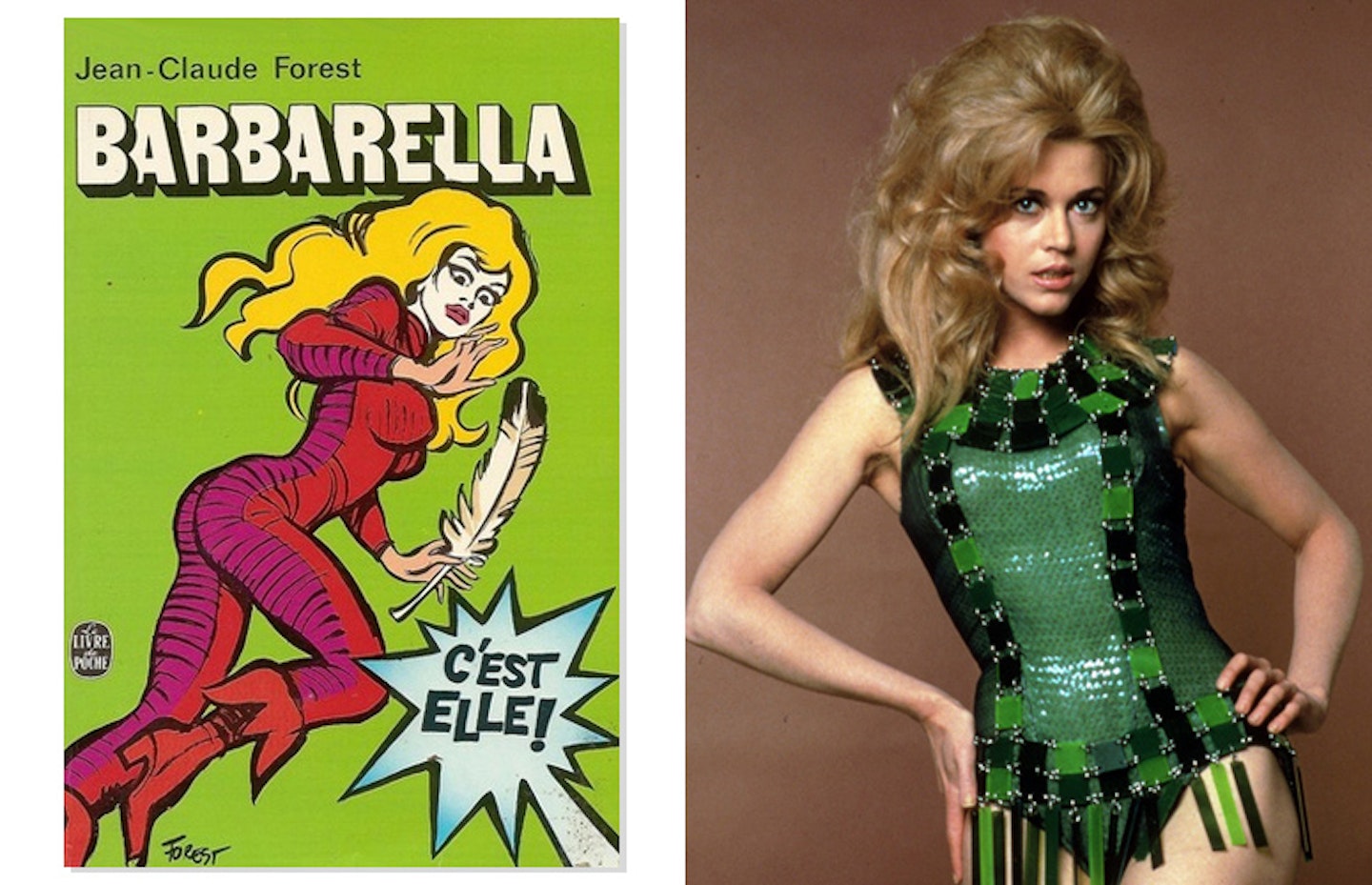
Comic book: Barbarella (1962-1964)
Film: Barbarella (Roger Vadim, 1968)
Yes, this cult space romp has a literary source. It is, unsurprisingly, French, and provoked a minor scandal when published as a standalone volume. Its absurdist eroticism is carried pretty faithfully over to the big screen, though some other elements are changed: in the comic, Barbarella is an outlaw, and the film streamlines much of the original story. Still, it’s become something of a cult classic, despite its critical drubbing at the time.

Comic book: Diabolik (1962-present)
Film: Danger: Diabolik (Mario Bava, 1968)
A camp classic, Danger: Diabolik is a stylish adaptation of Angela and Luciana Giussani’s Italian comic. It follows the exploits of the eponymous hero (John Phillip Law) and his girlfriend Eva (Marisa Mell), and oozes ‘60s cool. The film is peppered with Jaguar E-Types, Ennio Morricone’s twanging guitars, and actual comic-book art: at one point, frames from the original Barbarella comic make an appearance, reinforcing a connection between the two adaptations (both were produced by Dino De Laurentiis). Director Mario Bava reportedly refused a $3m budget, certain he could produce the goods for just $500,000 – and he managed it. Through a genuinely impressive use of effects and miniatures, as well as stylish production design, it manages to replicate its graphic origins more effectively than almost all the films on this list.
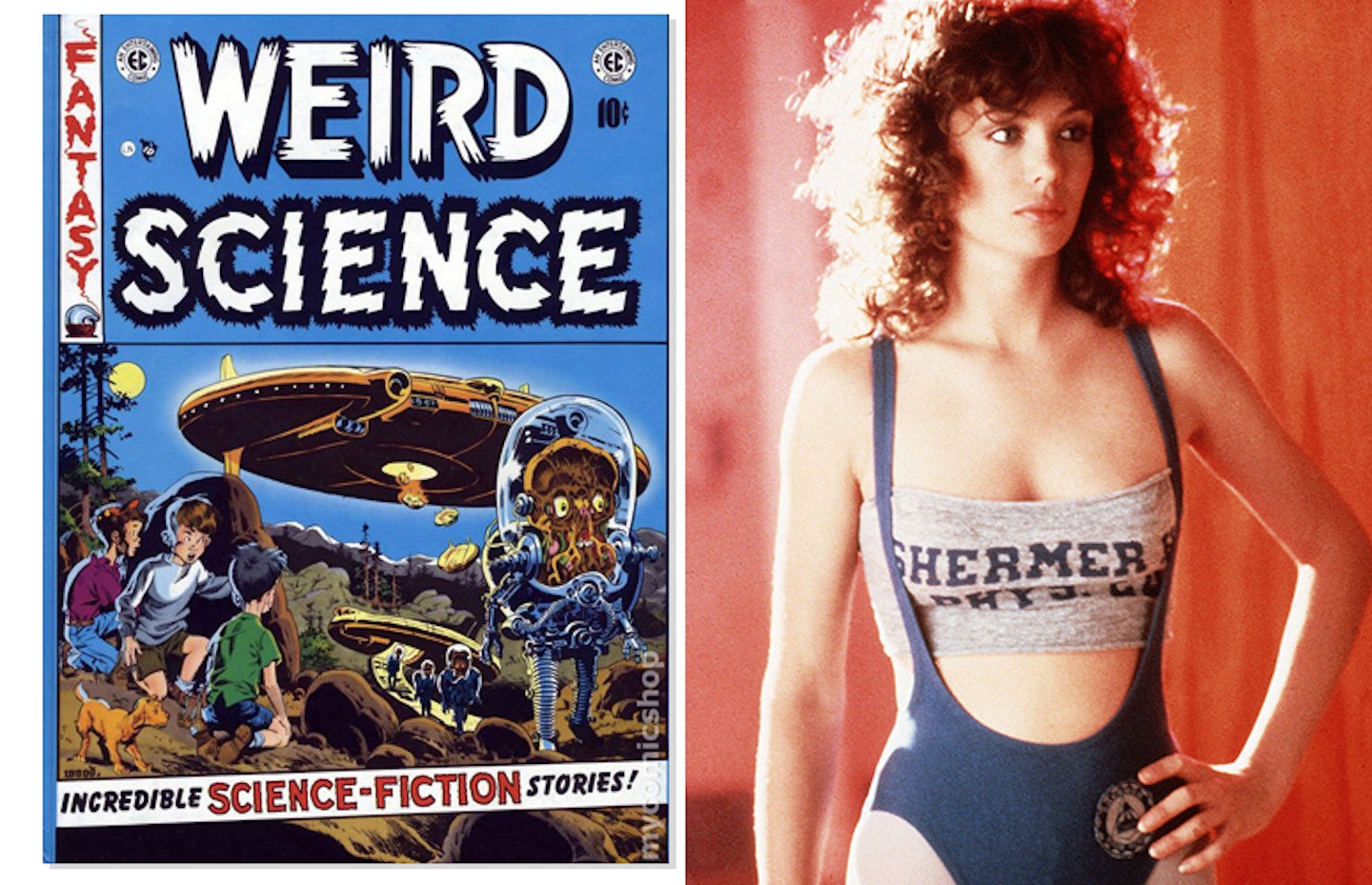
Comic book: Weird Science (1950-1953)
Film: Weird Science (John Hughes, 1985)
It seems strange to think of John Hughes relying on someone else’s source material, but in fairness to him, Weird Science is based in the loosest sense on a very old comic. Issue #5 featured a story entitled “Made Of The Future” which offered Hughes the basic premise of two nerds trying to create the perfect woman. From there, he created a film that, it’s fair to say, wasn’t one of his very best, despite a vocal fanbase. Nonetheless, it spawned a successful ‘90s TV show, and a remake is now rumoured to be approaching.
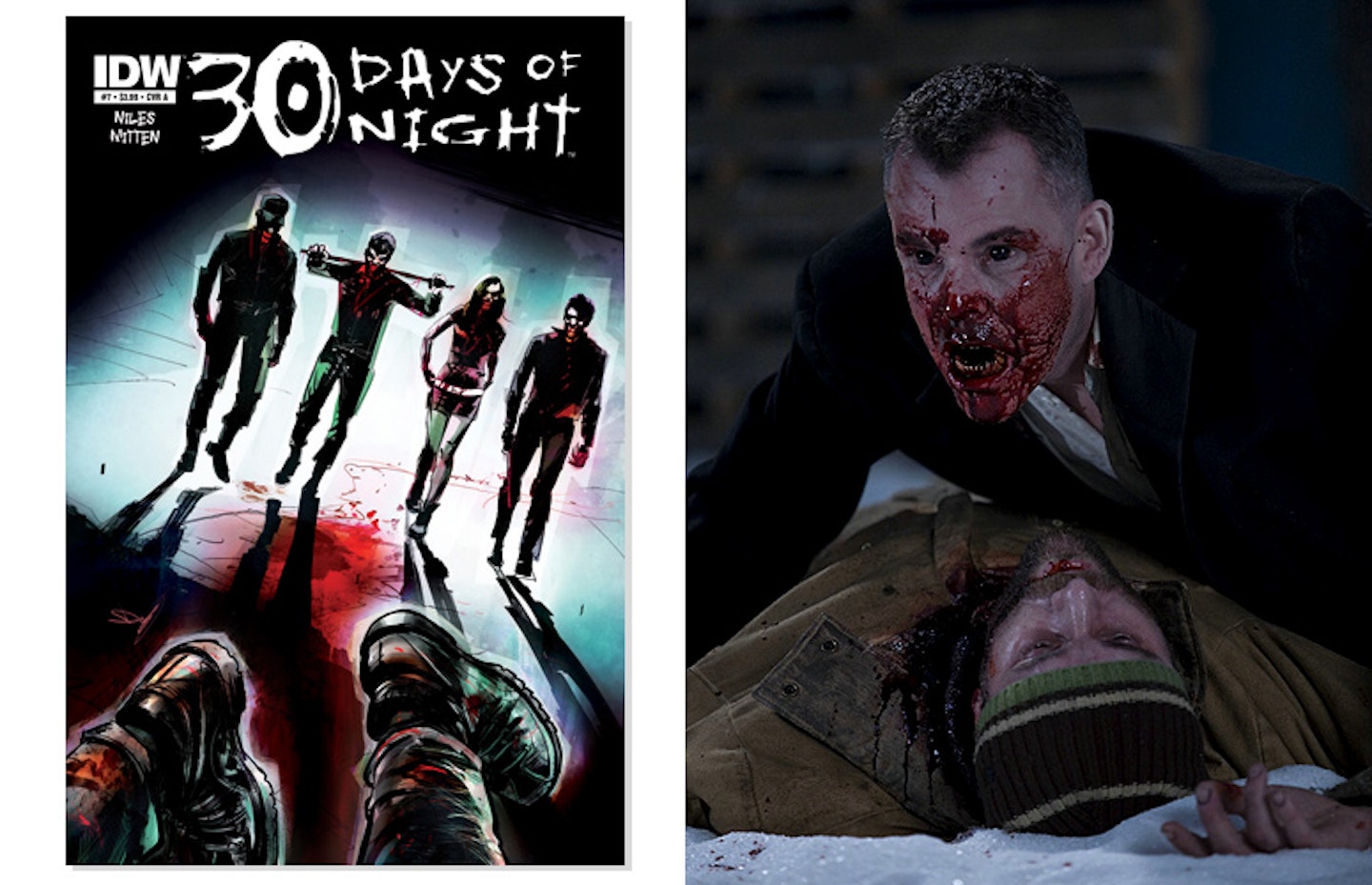
Comic book: 30 Days Of Night (2002)
Films: 30 Days Of Night (David Slade, 2007), 30 Days Of Night: Dark Days (Ben Ketai, 2010)
This underrated horror is the perfect antidote to Twilight (even if its director went on to direct one of the teen vampire installments). With its visual gusto and blood-spattered snow, it’s perhaps not surprising its roots are in comics. As with many of the comics on this list, the creators – Steve Niles and Ben Templesmith – initially intended this to be a film, but when that was (originally) unsuccessful, they created this short and brutal graphic novel. Slade is remarkably loyal in his adaptation, and even keeps the ending intact. The biggest changes come in the form of additional characters, and the fact that the vampires speak their own language. Other than that, there’s not much difference.
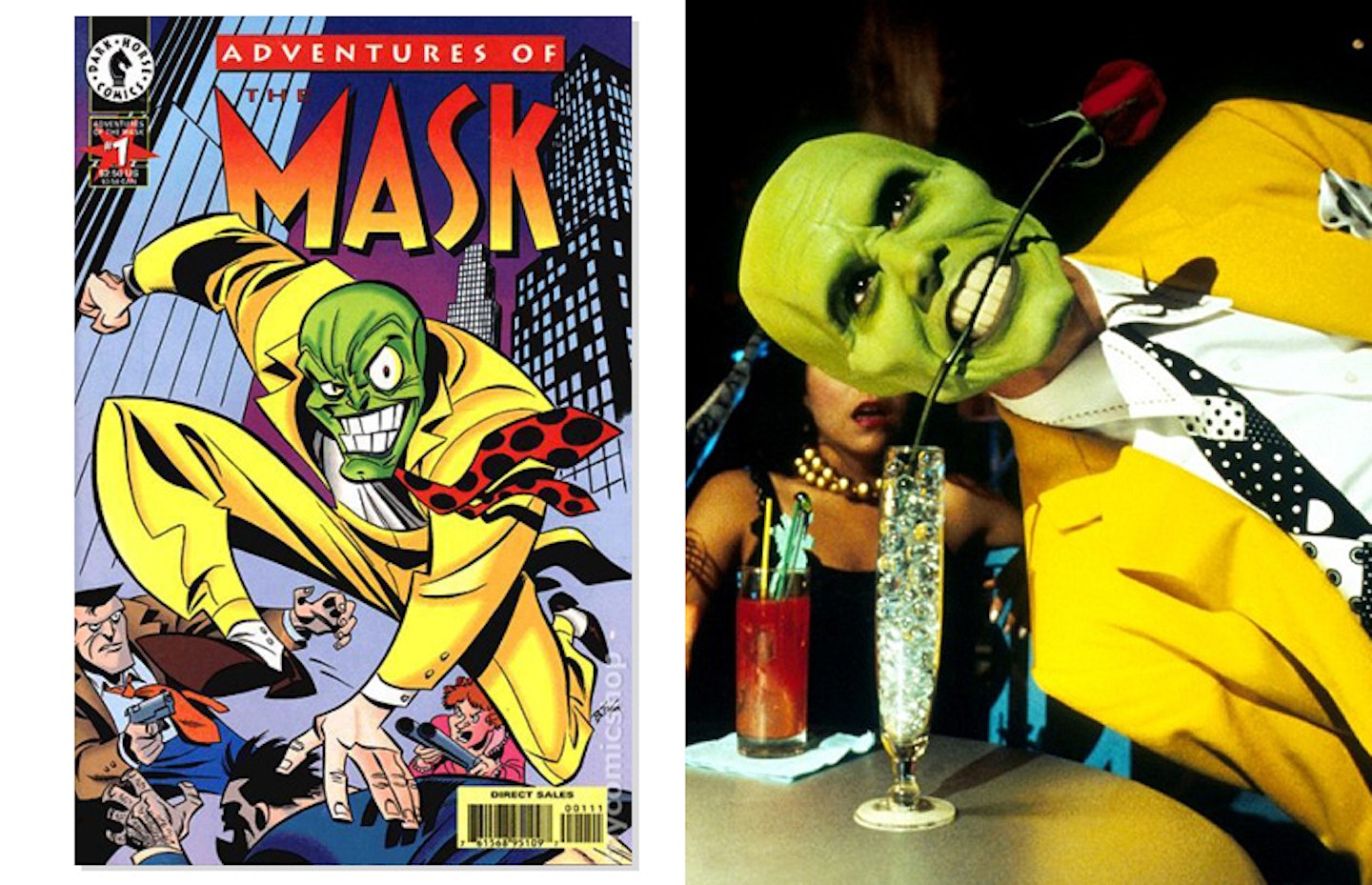
Comic book: The Mask (1989-2000)
Film: The Mask (Chuck Russell, 1994), Son Of The Mask (Lawrence Guterman, 2005)
While Jim Carrey’s zany comedy is beloved by many, it bears little resemblance to its black-as-night source material. The two start from the same basic idea of a magical mask transforming Stanley Ipkiss into a powerful cartoonish maniac, but the comic’s vision is a dark and violent one. There is a lot more murder in the Mask’s print appearances, and the film was originally intended to carry this violence over. Instead, it proved safer – and easier – to make it a straight-up comedy, with a far more cartoonish feel.
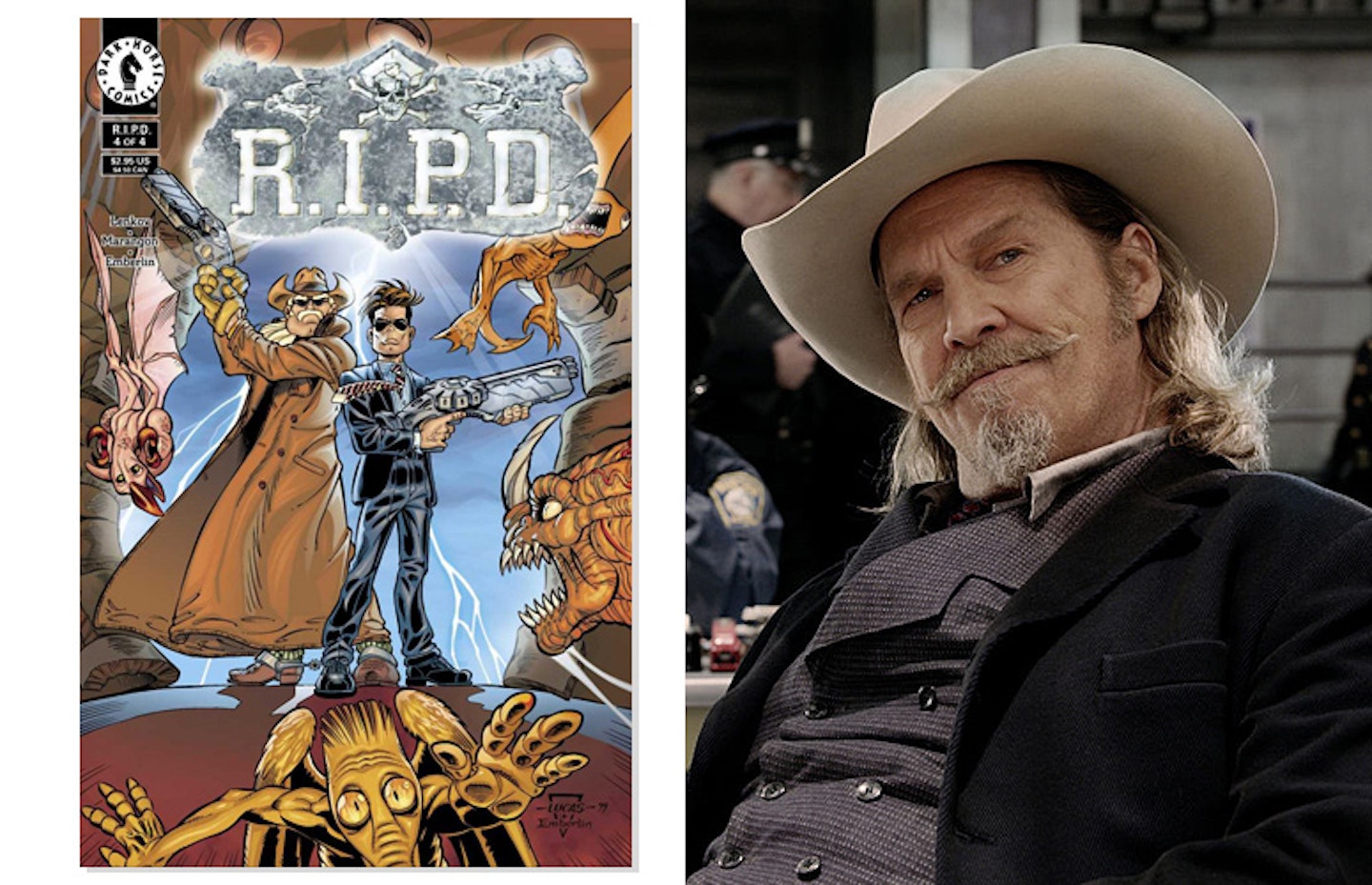
Comic book: Rest In Peace Department (2003)
Film: R.I.P.D. (Robert Schwentke, 2013)
The original Dark Horse comic by Peter Lenkov is fairly obscure, and extremely cartoonish, but this film adaptation gets a lot more bombastic and expensive than its source. The best thing about it is Jeff Bridges, in a role that, bizarrely, was originally intended for Zach Galifianakis. The comic wasn’t hugely successful, but looks like The Avengers next to the film version, which bombed at the box office and was scorned by critics. Roger Moore (no, not that one) called it “the worst comic book adaptation since Jonah Hex,” while Kyle Smith thought it looked like it was “born of the same kind of brainstorming-on-L.S.D. session that must have given us Howard The Duck.” Speaking of which…
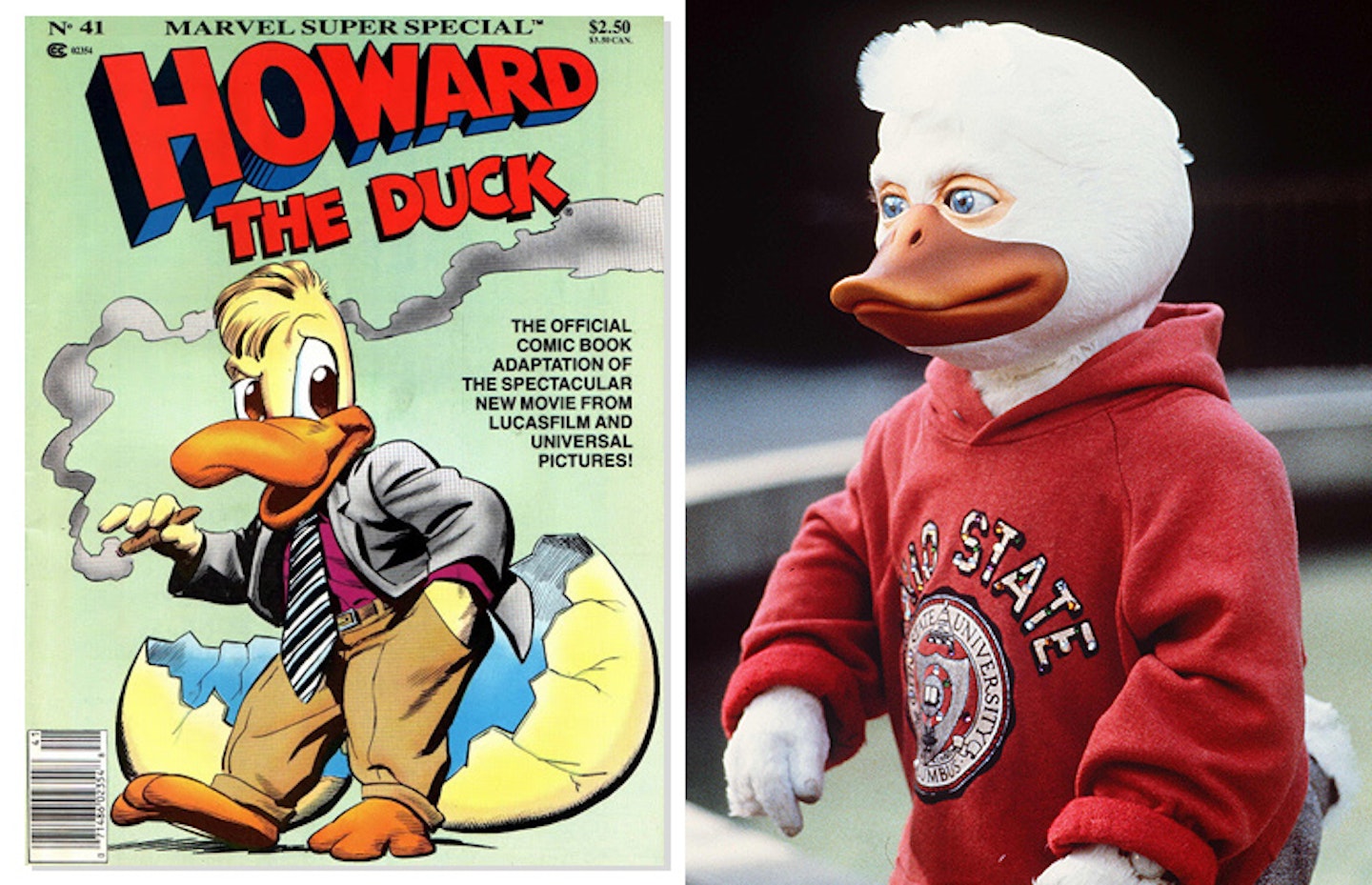
Comic book: Howard The Duck (1973-present)
Film: Howard The Duck (Willard Huyck, 1986)
Given it’s one of the most famously bad films of all time, it’s easy to forget that the creepy cartoonish Howard came from an actual cartoon. In fairness, the resemblance between him and his comic counterpart is so shaky as to be almost non-existent. Supposedly, George Lucas had wanted to make this as an actual cartoon, but was contractually obliged to provide the studio with a live-action film. Howard’s appearance isn’t the only thing that’s changed: the existentialist ideas that pervade the comic were entirely abandoned by screenwriter Gloria Katz, and the satire and wit of the original were completely lost.

Comic book: Blue Is The Warmest Color (2010)
Film: Blue Is The Warmest Colour (Abdellatif Kechiche, 2013)
It’s unfortunate that its sex scenes are what the film version is most famous for, as they distract from what is a magnificent, sweeping adaptation of the original comic. However, these scenes were also the source of most of the objections from the original author of the comic, Julie Maroh: “As a feminist and lesbian spectator, I cannot endorse the direction Kechiche took on these matters.” Though she didn’t object to the film as a whole, the adaptation is also a pretty loose one, with the ending changed substantially from the comic.
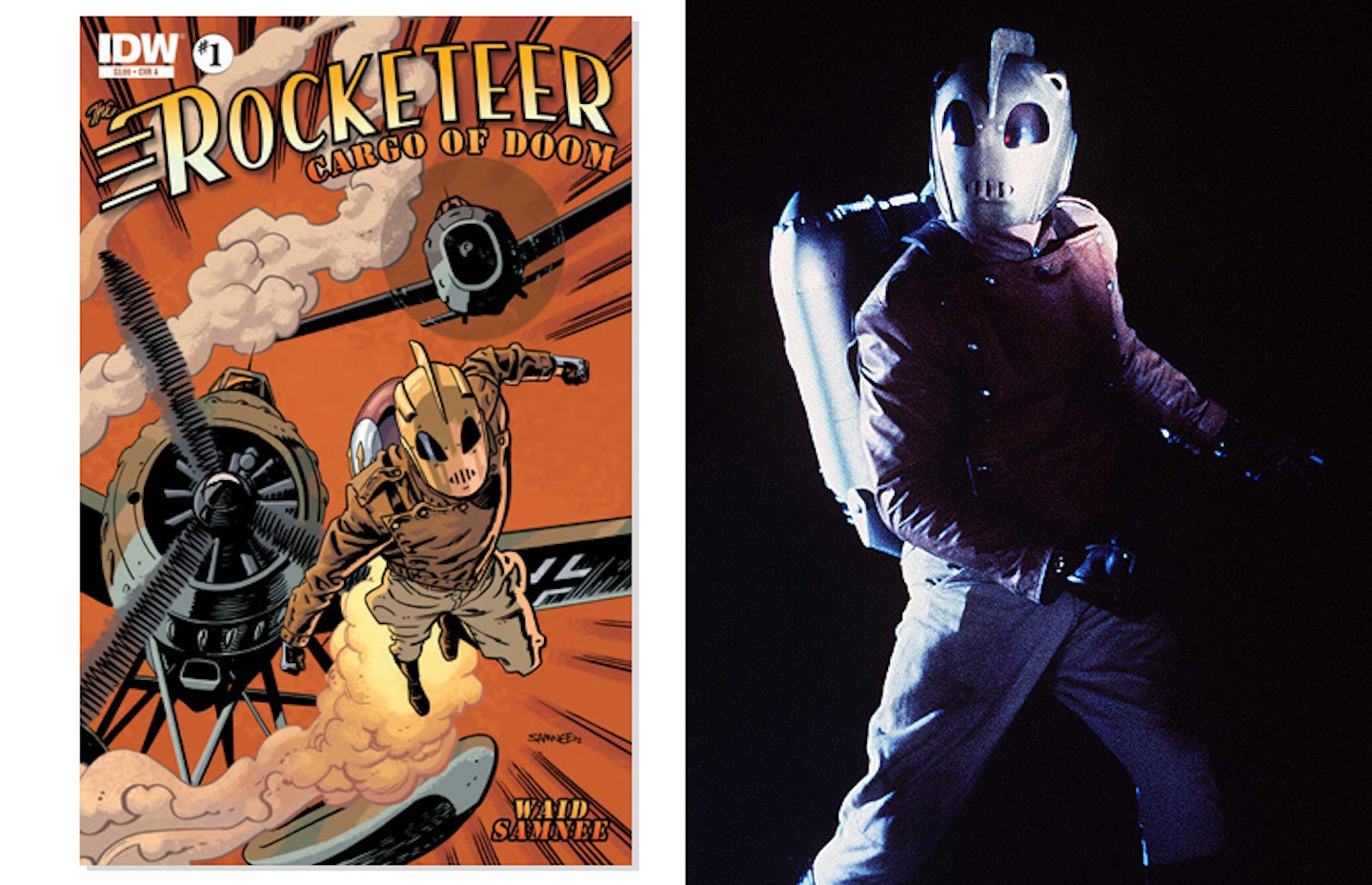
Comic book: The Rocketeer (1982-present)
Film: The Rocketeer (Joe Johnston, 1991)
Almost as soon as this comic first appeared, efforts began to get the Rocketeer onto the big screen. A low-budget, black-and-white version was in the offing, before a more Hollywood version came about through Disney. Given its long and difficult development, the final film is a remarkably close adaptation, excising the comic’s nudity and language, but retaining the tone that had made it so successful. Disney happily upped the budget during filming, and was preparing for a big hit. Unfortunately, though critics and fans were happy, audiences largely stayed away, and a planned sequel never materialised.

Comic book: Du Plomb Dans La Tête (2010)
Film: Bullet To The Head (Walter Hill, 2012)
The sinewy, sweaty, 60-something body of Sylvester Stallone is on full display in the film version of this comic, but there’s little depth to be found. The original, solid French comic by Alexis Nolent is done no favours by Alessandro Camon’s very weak screenplay, and Stallone’s angry mumbles don’t obscure the bad writing quite enough. The film enhances the comic’s ‘80s tone, but somehow despite that on the big screen it falls almost completely flat.
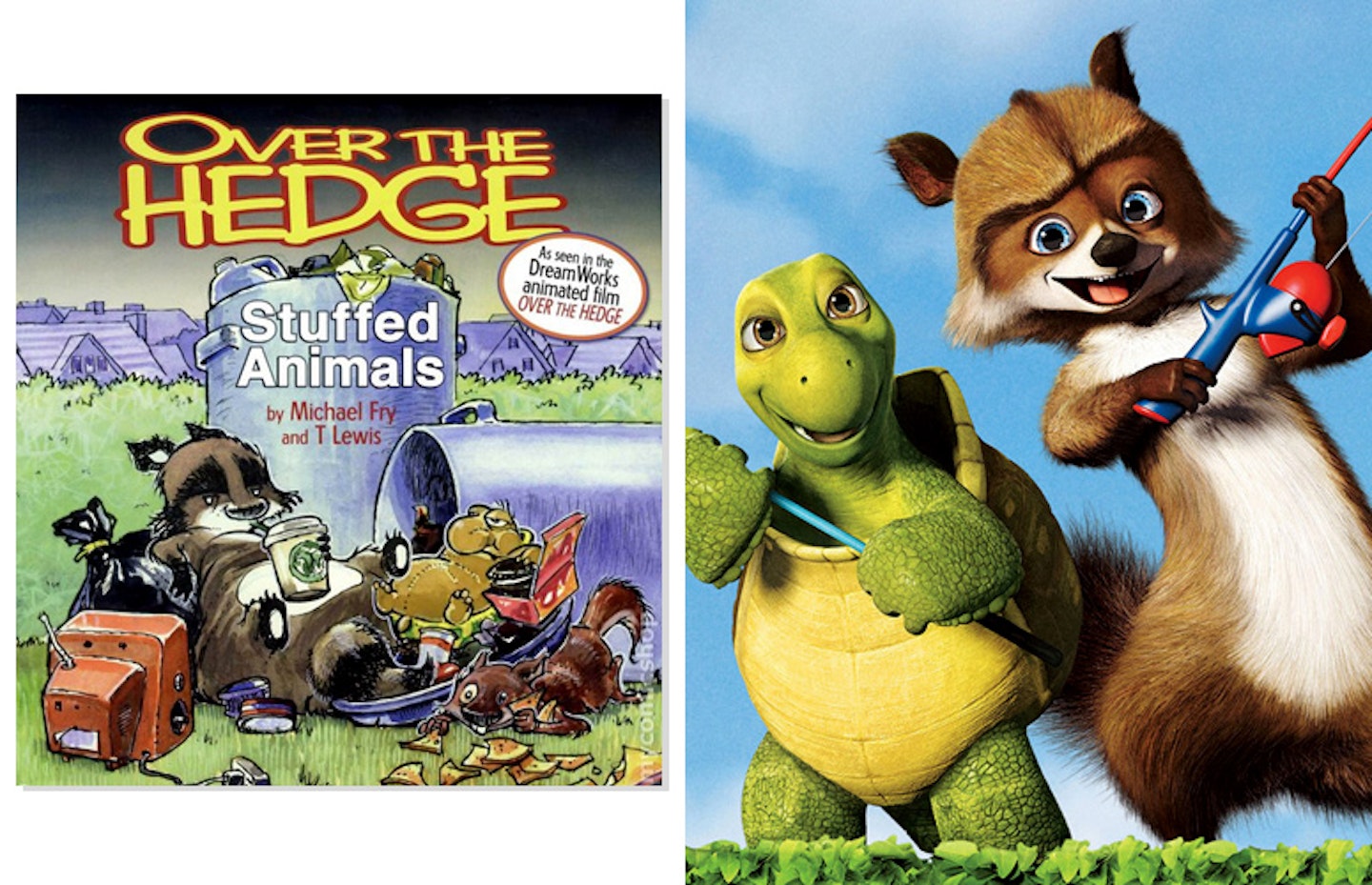
Comic book: Over The Hedge (1995-present)
Film: Over The Hedge (Tim Johnson & Karey Kirkpatrick, 2006)
The comic strip and the film look pretty similar, and they’re fairly close. While some of the more biting satire of the original comic is lost onscreen, it’s heartening to see at least some of its mockery of consumerism and technology survived the adaptation. Critics were pleased, and it did fairly well at the box office – but not quite well enough. DreamWorks Animation’s CEO Jeffrey Katzenberg reflected that, “It was close. An almost."

Comic book: Little Orphan Annie (1924-2010)
Films: Little Orphan Annie (John S. Robertson, 1932), Little Orphan Annie (Ben Holmes, 1938), Annie (John Huston, 1982), Annie: A Royal Adventure! (Ian Toynton, 1996), Annie (Rob Marshall, 1999), Annie (Will Gluck, 2014)
The perennially popular ginger orphan has her roots in the 1920s, and hasn’t faded since. Her very first comic appearance included the famous curls and the harshly uncaring orphanage home, but she quickly expanded out of the page. She was on the radio by 1930, and reached the silver screen in 1932. She’s been in five separate adventures onscreen so far, and her 2014 incarnation will come in the adorable form of Beasts Of The Southern Wild's Quvenzhané Wallis. Throughout all of these, the central, Dickensian idea of a little orphan being rescued by rich Daddy Warbucks has remained. The musical elements obviously weren’t in the original comic, but the spirit has stayed remarkably consistent.